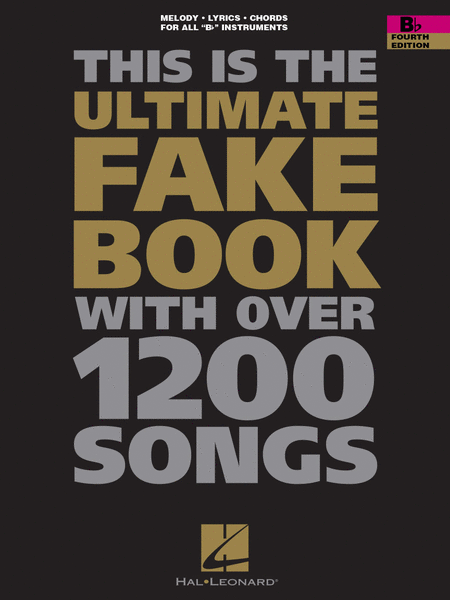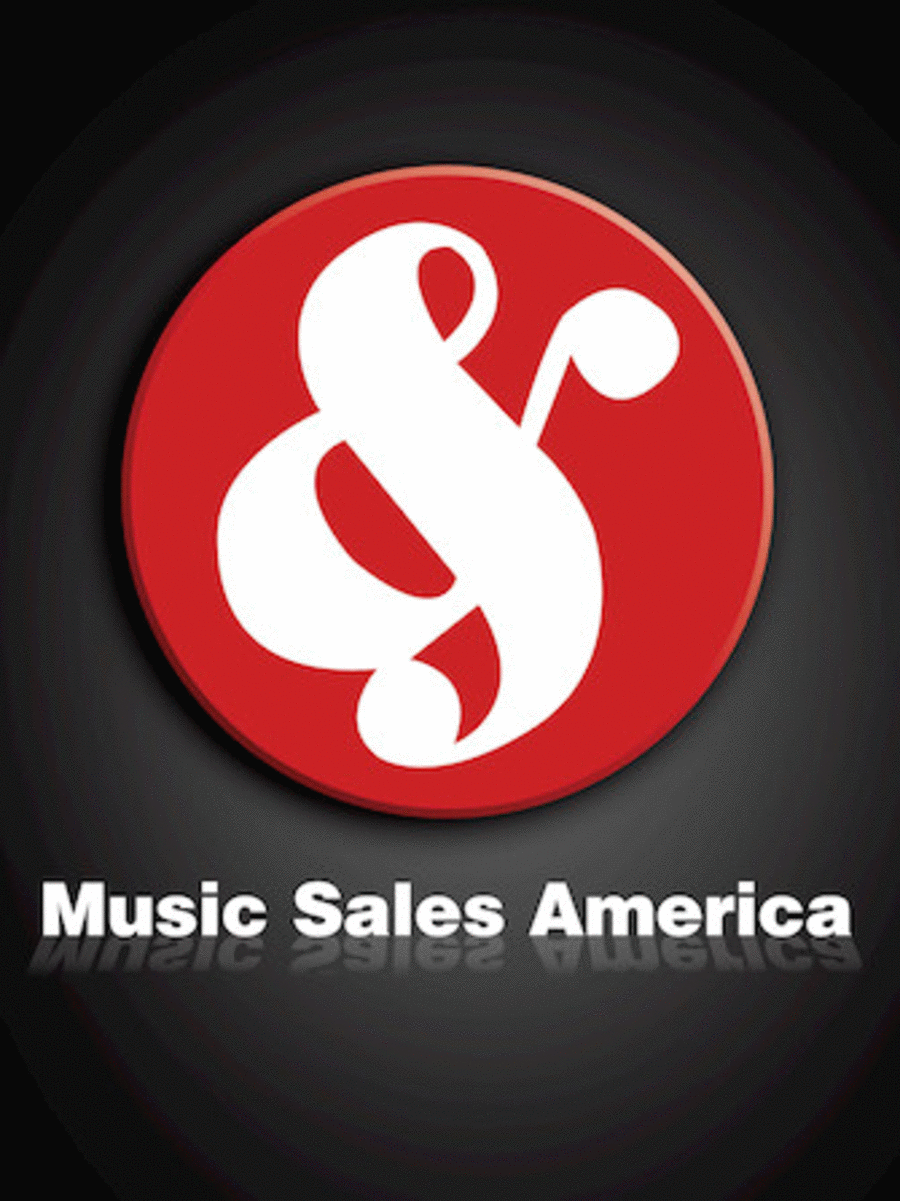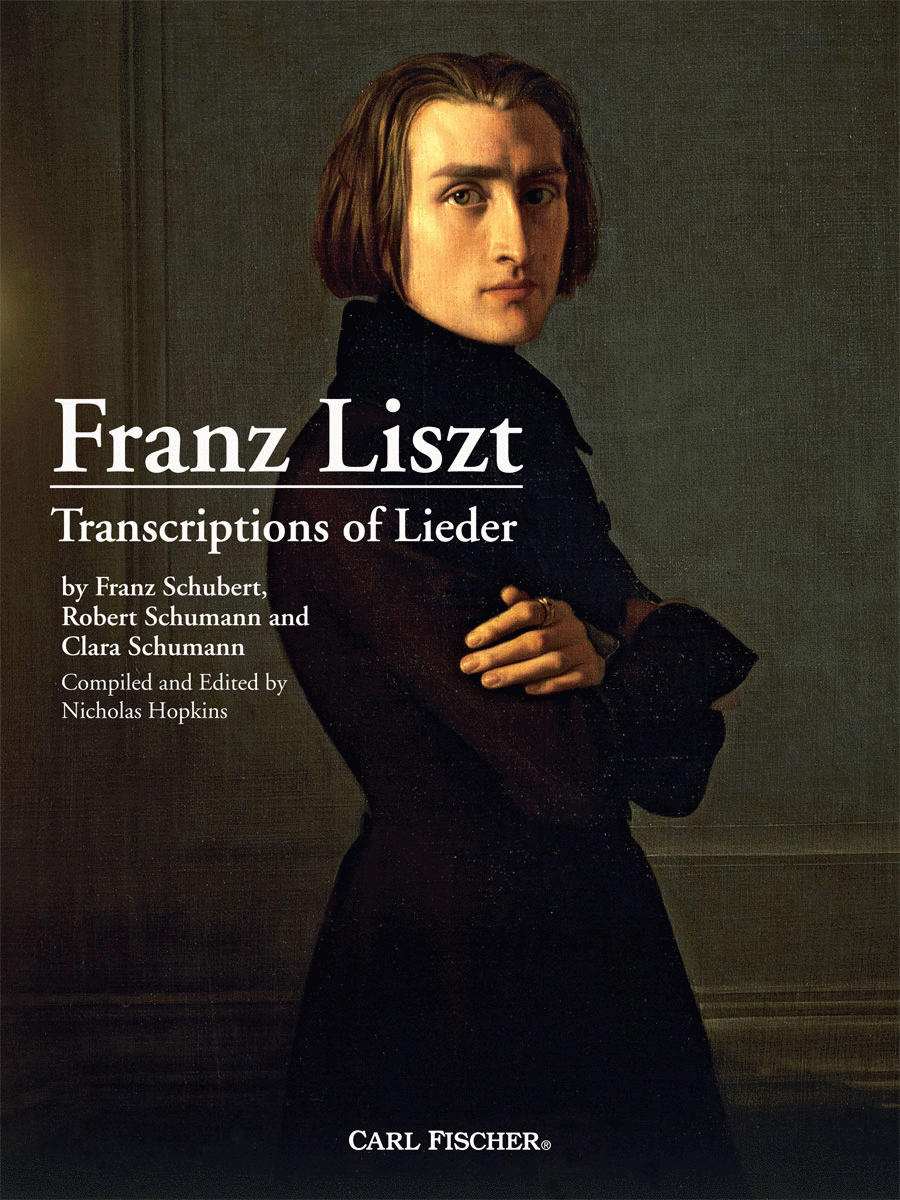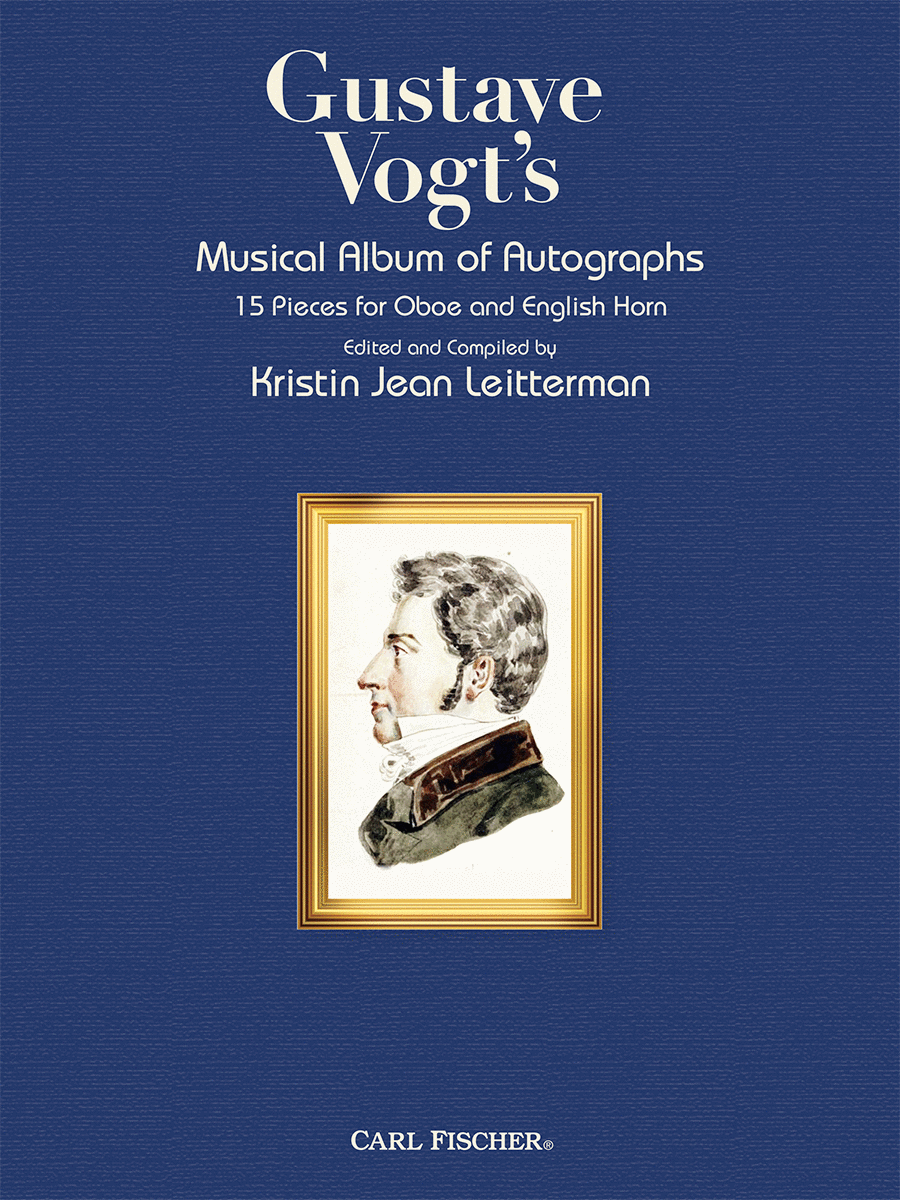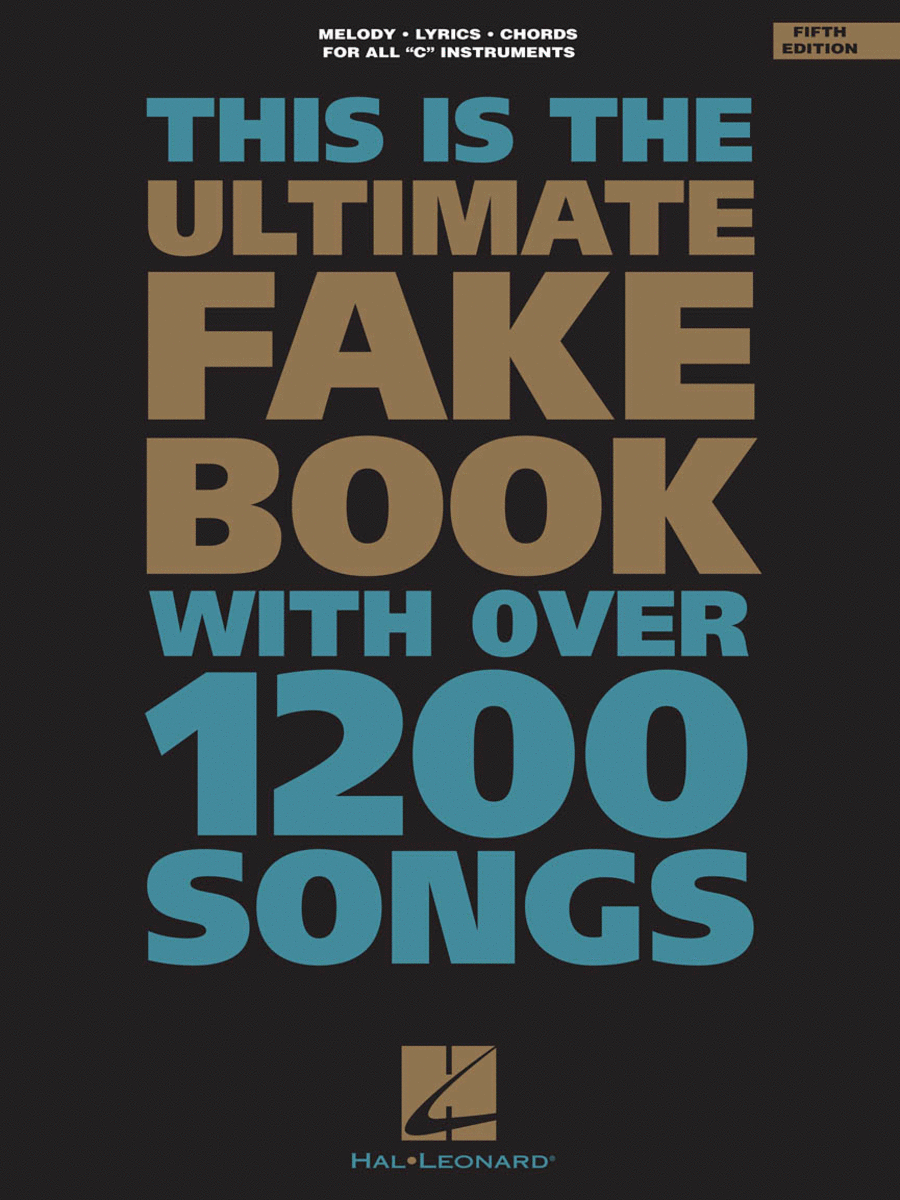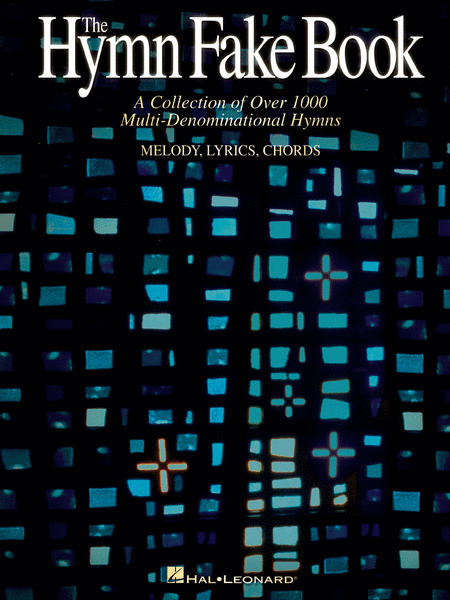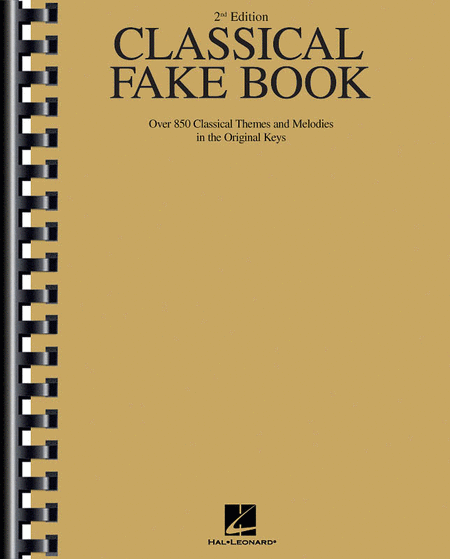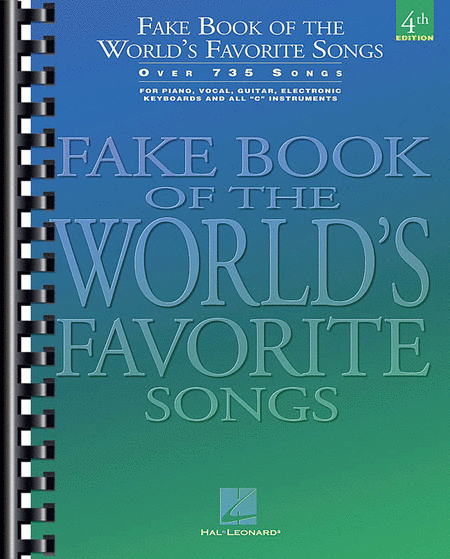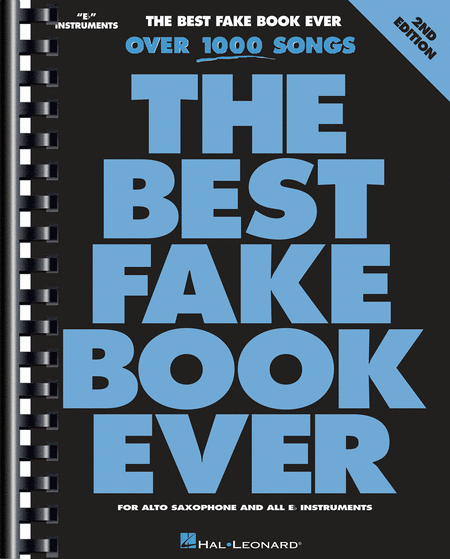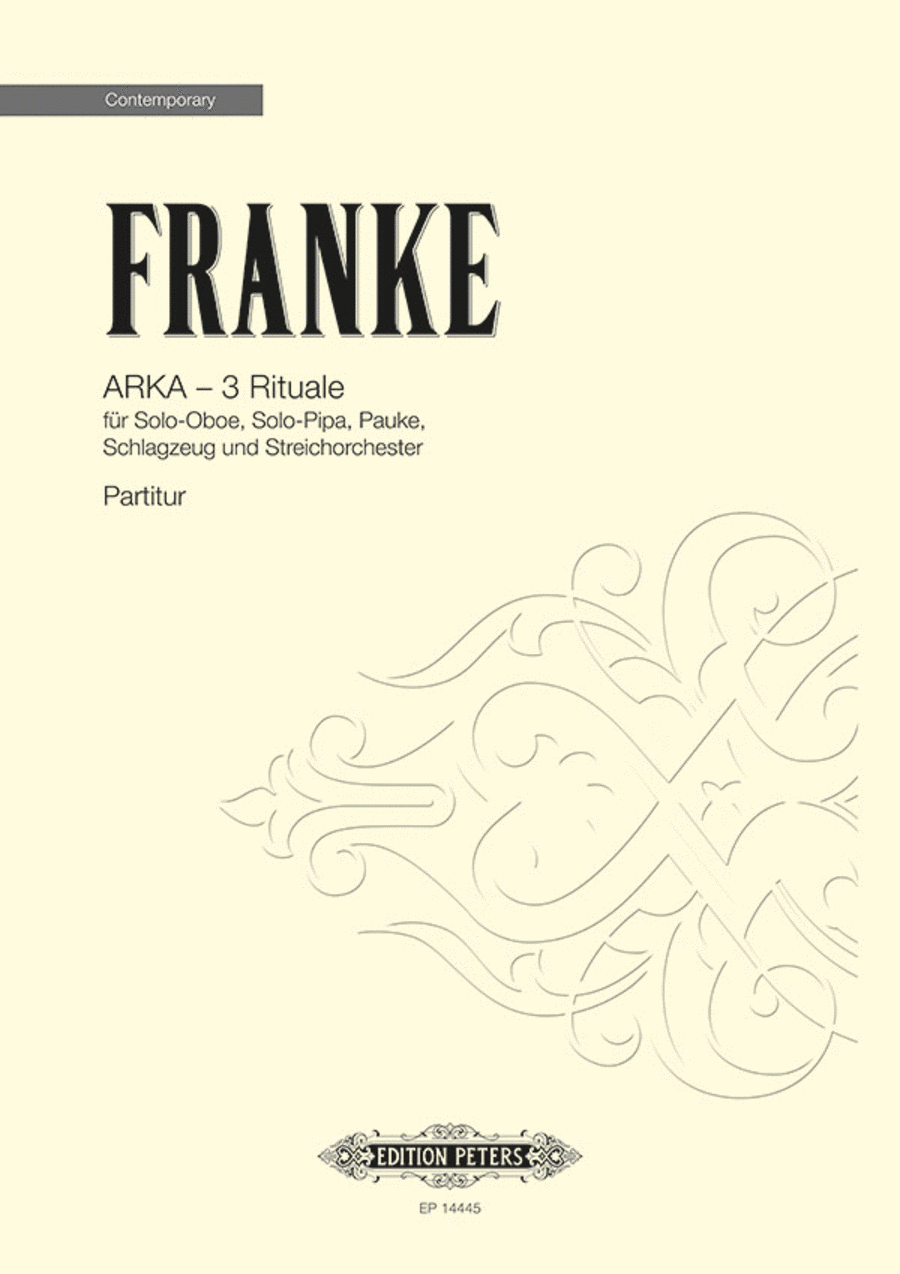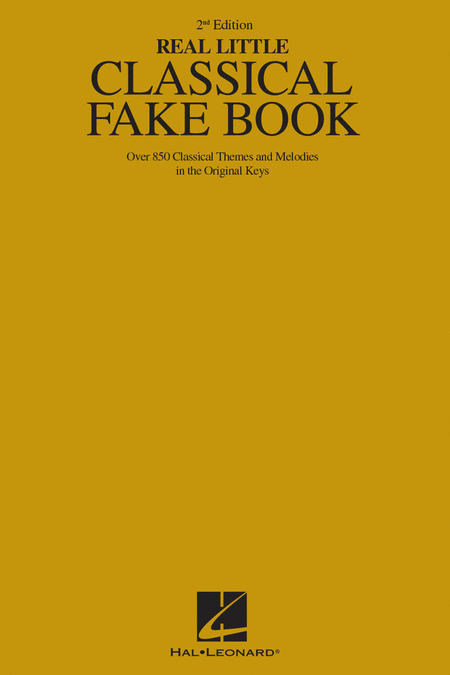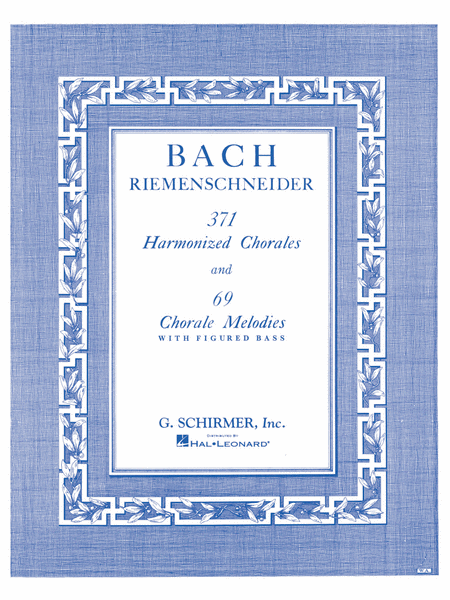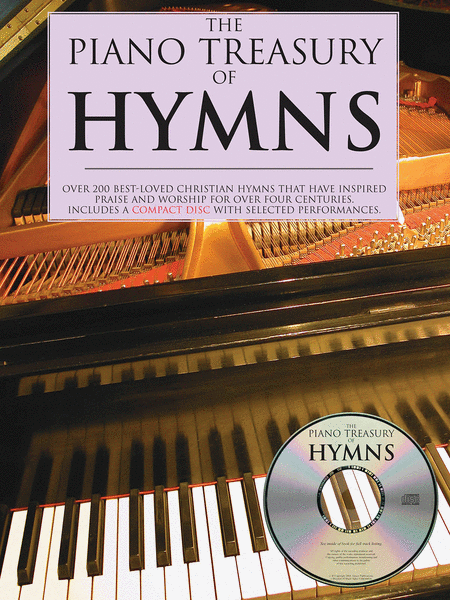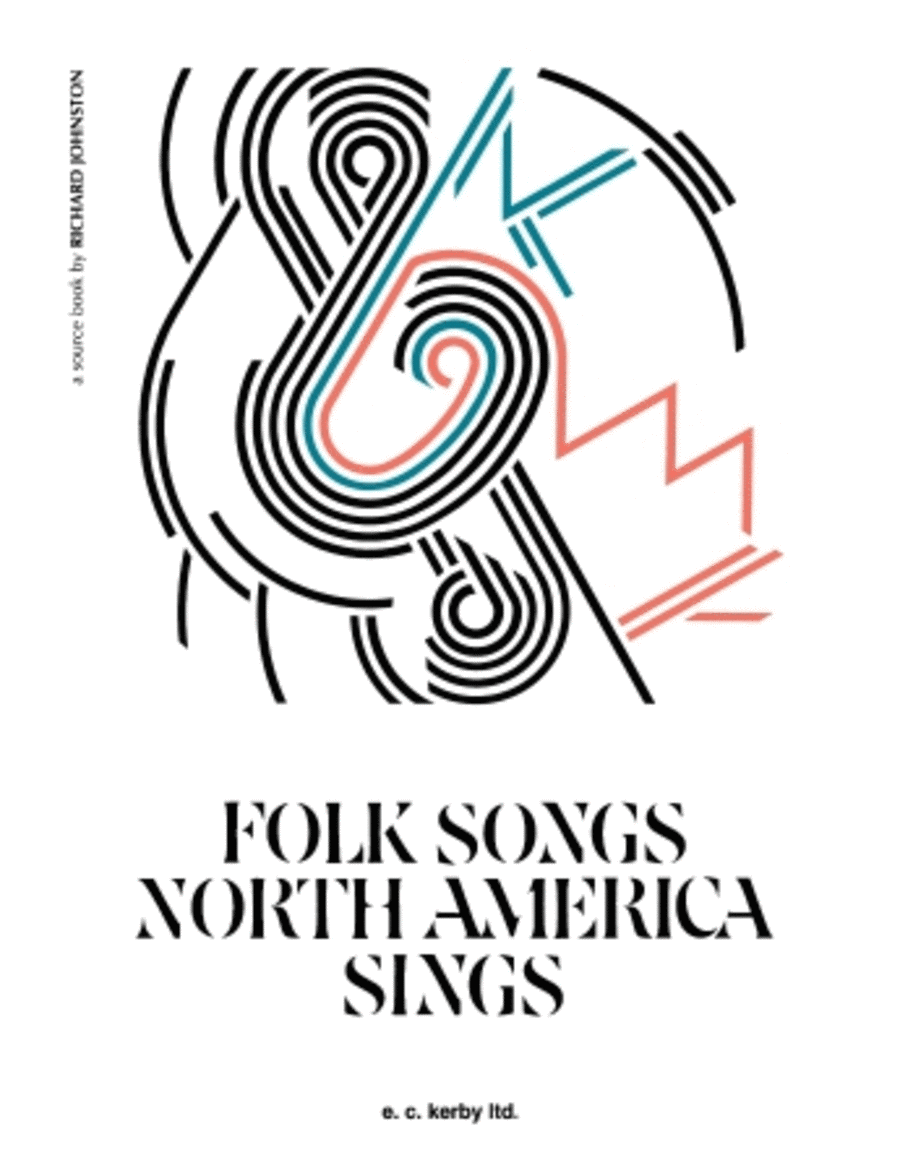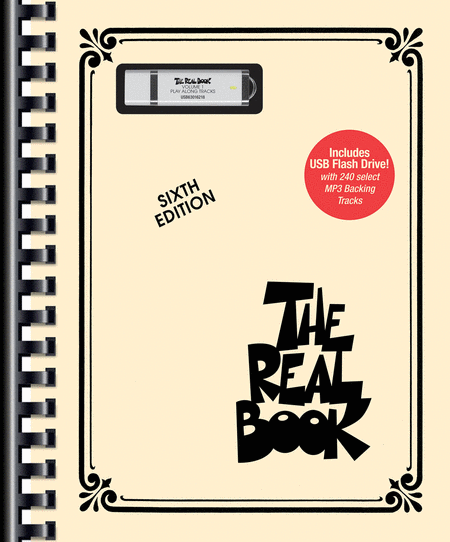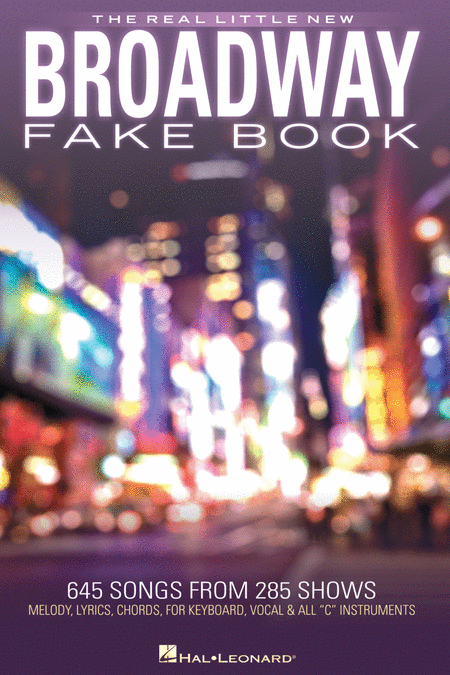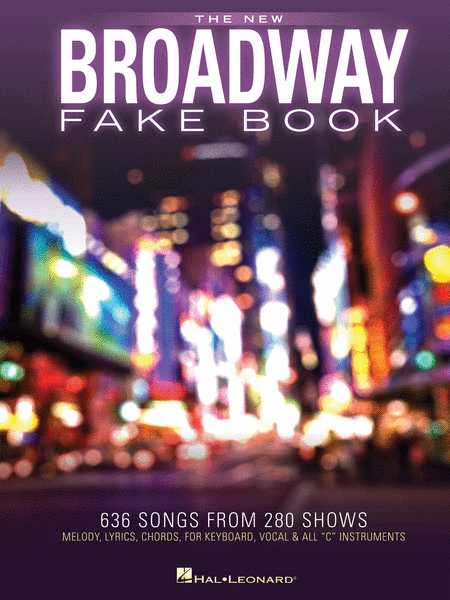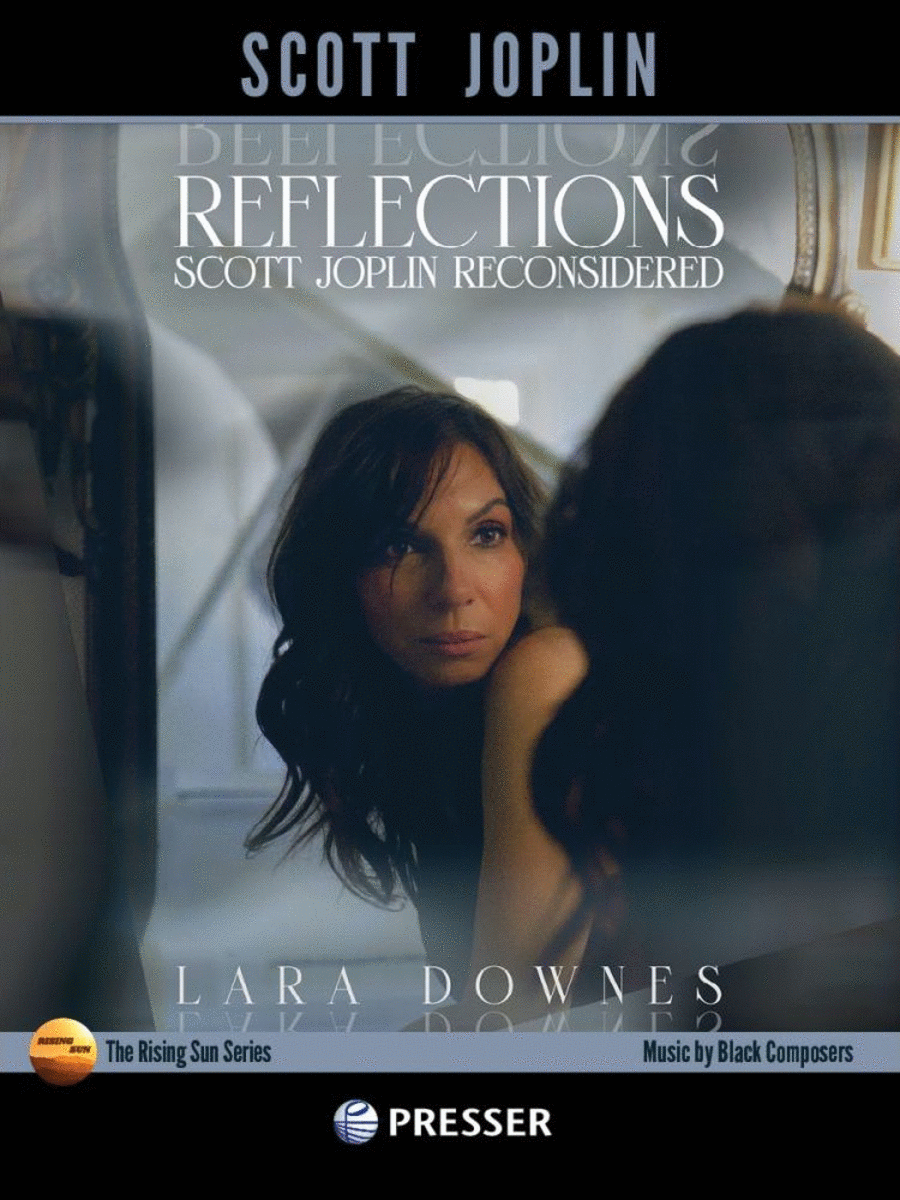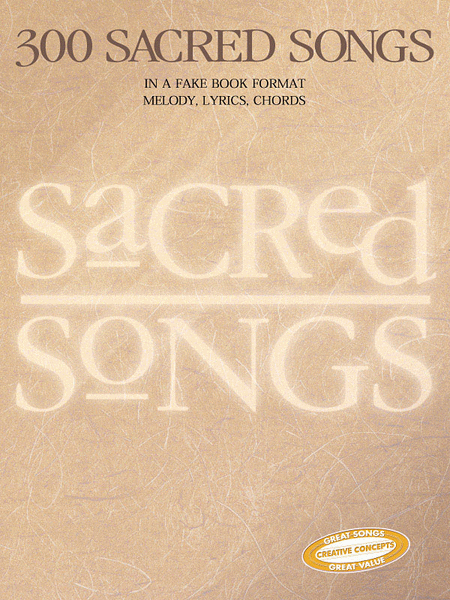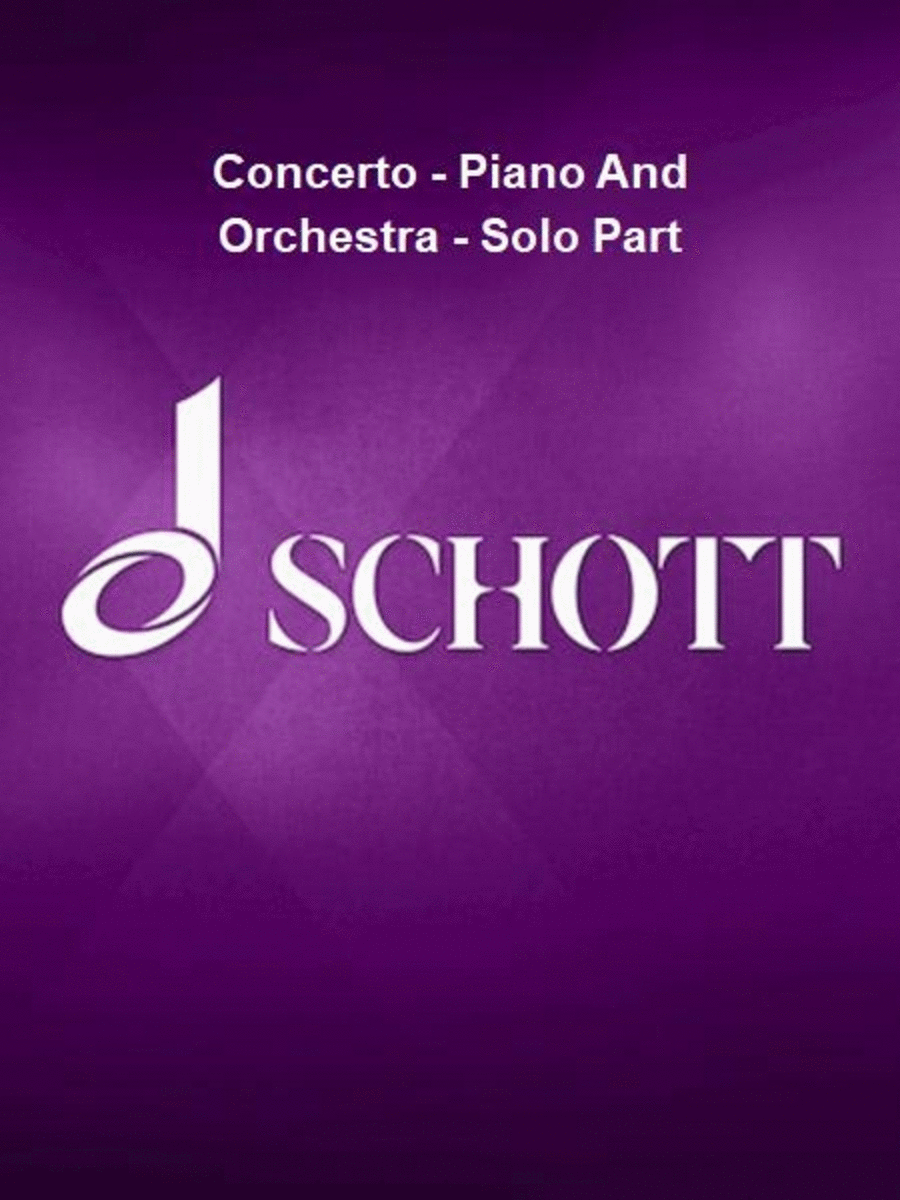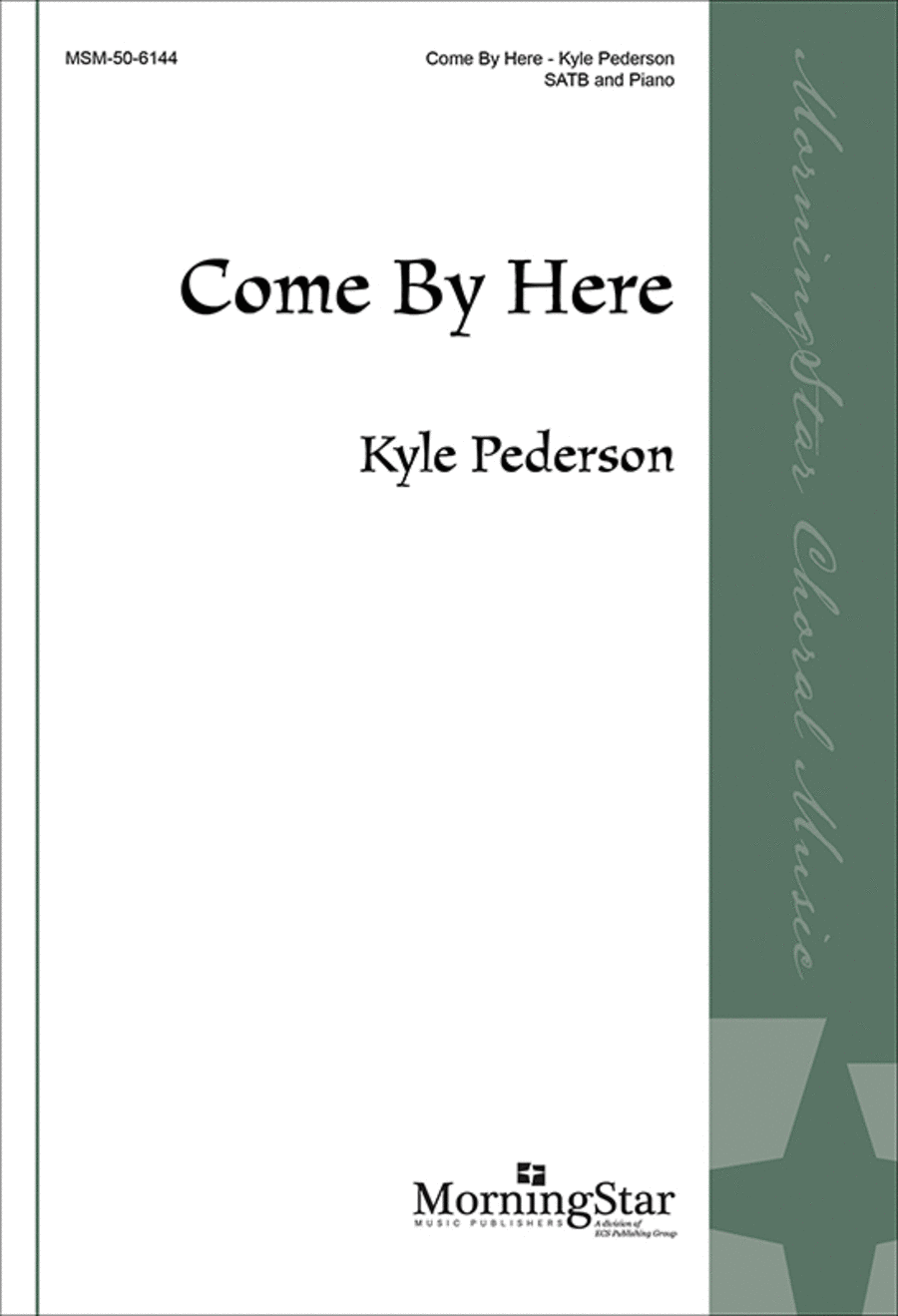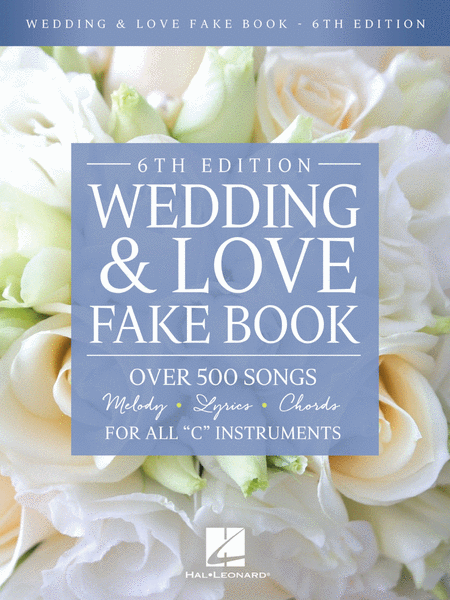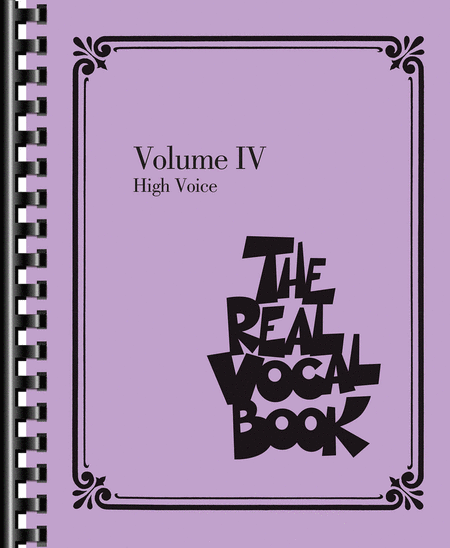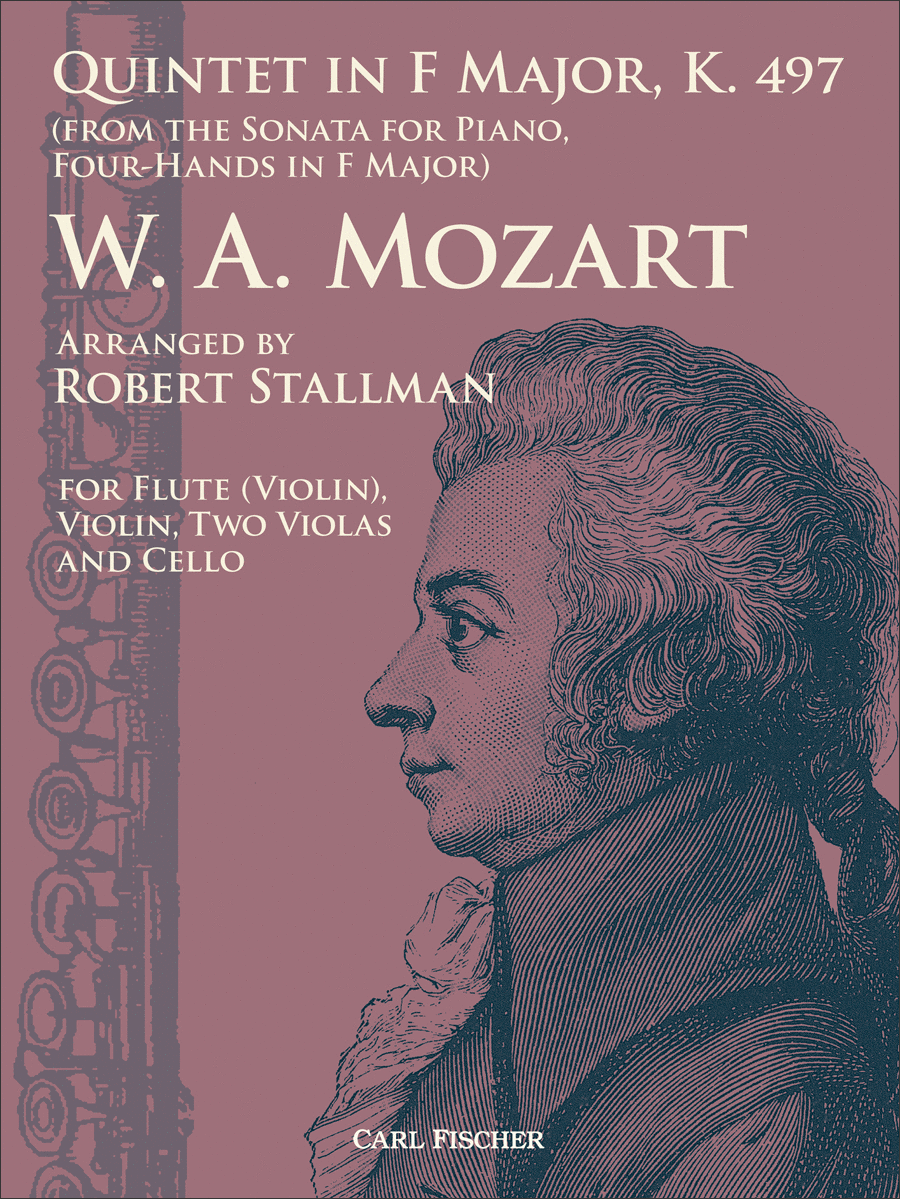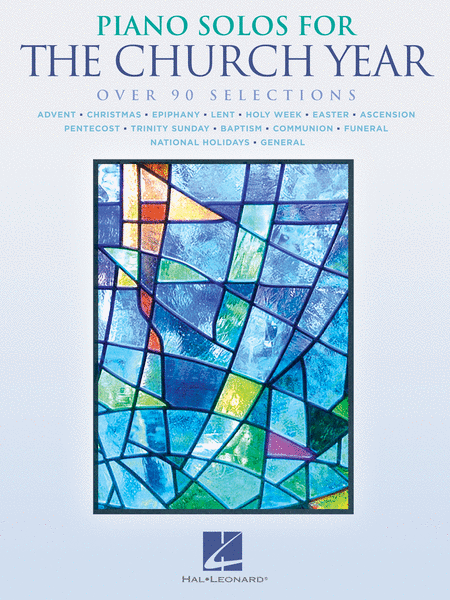|
| The Ultimate Fake Book - Third Edition (Bb version)
Instruments en Sib [Fake Book]
Hal Leonard
Bb Edition. Fake Book (Includes melody line and chords). Size 9x12 inches. 816 p...(+)
Bb Edition. Fake Book
(Includes melody line and
chords). Size 9x12
inches. 816 pages.
Published by Hal Leonard.
(8)$49.95 - Voir plus => AcheterDélais: 3 to 5 business days | | | |
| Buskers Fake Book All Time Hit
Piano seul
Music Sales
| | | |
| Transcriptions of Lieder
Piano seul
Carl Fischer
Chamber Music Piano SKU: CF.PL1056 Composed by Clara Wieck-Schumann, Fran...(+)
Chamber Music Piano
SKU: CF.PL1056
Composed by Clara
Wieck-Schumann, Franz
Schubert, and Robert
Schumann. Edited by
Nicholas Hopkins.
Collection. With Standard
notation. 128 pages. Carl
Fischer Music #PL1056.
Published by Carl Fischer
Music (CF.PL1056).
ISBN 9781491153390.
UPC: 680160910892.
Transcribed by Franz
Liszt. Introduction
It is true that Schubert
himself is somewhat to
blame for the very
unsatisfactory manner in
which his admirable piano
pieces are treated. He
was too immoderately
productive, wrote
incessantly, mixing
insignificant with
important things, grand
things with mediocre
work, paid no heed to
criticism, and always
soared on his wings. Like
a bird in the air, he
lived in music and sang
in angelic fashion.
--Franz Liszt, letter to
Dr. S. Lebert (1868) Of
those compositions that
greatly interest me,
there are only Chopin's
and yours. --Franz Liszt,
letter to Robert Schumann
(1838) She [Clara
Schumann] was astounded
at hearing me. Her
compositions are really
very remarkable,
especially for a woman.
There is a hundred times
more creativity and real
feeling in them than in
all the past and present
fantasias by Thalberg.
--Franz Liszt, letter to
Marie d'Agoult (1838)
Chretien Urhan
(1790-1845) was a
Belgian-born violinist,
organist and composer who
flourished in the musical
life of Paris in the
early nineteenth century.
According to various
accounts, he was deeply
religious, harshly
ascetic and wildly
eccentric, though revered
by many important and
influential members of
the Parisian musical
community. Regrettably,
history has forgotten
Urhan's many musical
achievements, the most
important of which was
arguably his pioneering
work in promoting the
music of Franz Schubert.
He devoted much of his
energies to championing
Schubert's music, which
at the time was unknown
outside of Vienna.
Undoubtedly, Urhan was
responsible for
stimulating this
enthusiasm in Franz
Liszt; Liszt regularly
heard Urhan's organ
playing in the
St.-Vincent-de-Paul
church in Paris, and the
two became personal
acquaintances. At
eighteen years of age,
Liszt was on the verge of
establishing himself as
the foremost pianist in
Europe, and this
awakening to Schubert's
music would prove to be a
profound experience.
Liszt's first travels
outside of his native
provincial Hungary were
to Vienna in 1821-1823,
where his father enrolled
him in studies with Carl
Czerny (piano) and
Antonio Salieri (music
theory). Both men had
important involvements
with Schubert; Czerny
(like Urhan) as performer
and advocate of
Schubert's music and
Salieri as his theory and
composition teacher from
1813-1817. Curiously,
Liszt and Schubert never
met personally, despite
their geographical
proximity in Vienna
during these years.
Inevitably, legends later
arose that the two had
been personal
acquaintances, although
Liszt would dismiss these
as fallacious: I never
knew Schubert personally,
he was once quoted as
saying. Liszt's initial
exposure to Schubert's
music was the Lieder,
what Urhan prized most of
all. He accompanied the
tenor Benedict
Randhartinger in numerous
performances of
Schubert's Lieder and
then, perhaps realizing
that he could benefit the
composer more on his own
terms, transcribed a
number of the Lieder for
piano solo. Many of these
transcriptions he would
perform himself on
concert tour during the
so-called Glanzzeit, or
time of splendor from
1839-1847. This publicity
did much to promote
reception of Schubert's
music throughout Europe.
Once Liszt retired from
the concert stage and
settled in Weimar as a
conductor in the 1840s,
he continued to perform
Schubert's orchestral
music, his Symphony No. 9
being a particular
favorite, and is credited
with giving the world
premiere performance of
Schubert's opera Alfonso
und Estrella in 1854. At
this time, he
contemplated writing a
biography of the
composer, which
regrettably remained
uncompleted. Liszt's
devotion to Schubert
would never waver.
Liszt's relationship with
Robert and Clara Schumann
was far different and far
more complicated; by
contrast, they were all
personal acquaintances.
What began as a
relationship of mutual
respect and admiration
soon deteriorated into
one of jealousy and
hostility, particularly
on the Schumann's part.
Liszt's initial contact
with Robert's music
happened long before they
had met personally, when
Liszt published an
analysis of Schumann's
piano music for the
Gazette musicale in 1837,
a gesture that earned
Robert's deep
appreciation. In the
following year Clara met
Liszt during a concert
tour in Vienna and
presented him with more
of Schumann's piano
music. Clara and her
father Friedrich Wieck,
who accompanied Clara on
her concert tours, were
quite taken by Liszt: We
have heard Liszt. He can
be compared to no other
player...he arouses
fright and astonishment.
His appearance at the
piano is indescribable.
He is an original...he is
absorbed by the piano.
Liszt, too, was impressed
with Clara--at first the
energy, intelligence and
accuracy of her piano
playing and later her
compositions--to the
extent that he dedicated
to her the 1838 version
of his Etudes d'execution
transcendante d'apres
Paganini. Liszt had a
closer personal
relationship with Clara
than with Robert until
the two men finally met
in 1840. Schumann was
astounded by Liszt's
piano playing. He wrote
to Clara that Liszt had
played like a god and had
inspired indescribable
furor of applause. His
review of Liszt even
included a heroic
personification with
Napoleon. In Leipzig,
Schumann was deeply
impressed with Liszt's
interpretations of his
Noveletten, Op. 21 and
Fantasy in C Major, Op.
17 (dedicated to Liszt),
enthusiastically
observing that, I feel as
if I had known you twenty
years. Yet a variety of
events followed that
diminished Liszt's glory
in the eyes of the
Schumanns. They became
critical of the cult-like
atmosphere that arose
around his recitals, or
Lisztomania as it came to
be called; conceivably,
this could be attributed
to professional jealousy.
Clara, in particular,
came to loathe Liszt,
noting in a letter to
Joseph Joachim, I despise
Liszt from the depths of
my soul. She recorded a
stunning diary entry a
day after Liszt's death,
in which she noted, He
was an eminent keyboard
virtuoso, but a dangerous
example for the
young...As a composer he
was terrible. By
contrast, Liszt did not
share in these negative
sentiments; no evidence
suggests that he had any
ill-regard for the
Schumanns. In Weimar, he
did much to promote
Schumann's music,
conducting performances
of his Scenes from Faust
and Manfred, during a
time in which few
orchestras expressed
interest, and premiered
his opera Genoveva. He
later arranged a benefit
concert for Clara
following Robert's death,
featuring Clara as
soloist in Robert's Piano
Concerto, an event that
must have been
exhilarating to witness.
Regardless, her opinion
of him would never
change, despite his
repeated gestures of
courtesy and respect.
Liszt's relationship with
Schubert was a spiritual
one, with music being the
one and only link between
the two men. That with
the Schumanns was
personal, with music
influenced by a hero
worship that would
aggravate the
relationship over time.
Nonetheless, Liszt would
remain devoted to and
enthusiastic for the
music and achievements of
these composers. He would
be a vital force in
disseminating their music
to a wider audience, as
he would be with many
other composers
throughout his career.
His primary means for
accomplishing this was
the piano transcription.
Liszt and the
Transcription
Transcription versus
Paraphrase Transcription
and paraphrase were
popular terms in
nineteenth-century music,
although certainly not
unique to this period.
Musicians understood that
there were clear
distinctions between
these two terms, but as
is often the case these
distinctions could be
blurred. Transcription,
literally writing over,
entails reworking or
adapting a piece of music
for a performance medium
different from that of
its original; arrangement
is a possible synonym.
Adapting is a key part of
this process, for the
success of a
transcription relies on
the transcriber's ability
to adapt the piece to the
different medium. As a
result, the pre-existing
material is generally
kept intact, recognizable
and intelligible; it is
strict, literal,
objective. Contextual
meaning is maintained in
the process, as are
elements of style and
form. Paraphrase, by
contrast, implies
restating something in a
different manner, as in a
rewording of a document
for reasons of clarity.
In nineteenth-century
music, paraphrasing
indicated elaborating a
piece for purposes of
expressive virtuosity,
often as a vehicle for
showmanship. Variation is
an important element, for
the source material may
be varied as much as the
paraphraser's imagination
will allow; its purpose
is metamorphosis.
Transcription is adapting
and arranging;
paraphrasing is
transforming and
reworking. Transcription
preserves the style of
the original; paraphrase
absorbs the original into
a different style.
Transcription highlights
the original composer;
paraphrase highlights the
paraphraser.
Approximately half of
Liszt's compositional
output falls under the
category of transcription
and paraphrase; it is
noteworthy that he never
used the term
arrangement. Much of his
early compositional
activities were
transcriptions and
paraphrases of works of
other composers, such as
the symphonies of
Beethoven and Berlioz,
vocal music by Schubert,
and operas by Donizetti
and Bellini. It is
conceivable that he
focused so intently on
work of this nature early
in his career as a means
to perfect his
compositional technique,
although transcription
and paraphrase continued
well after the technique
had been mastered; this
might explain why he
drastically revised and
rewrote many of his
original compositions
from the 1830s (such as
the Transcendental Etudes
and Paganini Etudes) in
the 1850s. Charles Rosen,
a sympathetic interpreter
of Liszt's piano works,
observes, The new
revisions of the
Transcendental Etudes are
not revisions but concert
paraphrases of the old,
and their art lies in the
technique of
transformation. The
Paganini etudes are piano
transcriptions of violin
etudes, and the
Transcendental Etudes are
piano transcriptions of
piano etudes. The
principles are the same.
He concludes by noting,
Paraphrase has shaded off
into
composition...Composition
and paraphrase were not
identical for him, but
they were so closely
interwoven that
separation is impossible.
The significance of
transcription and
paraphrase for Liszt the
composer cannot be
overstated, and the
mutual influence of each
needs to be better
understood. Undoubtedly,
Liszt the composer as we
know him today would be
far different had he not
devoted so much of his
career to transcribing
and paraphrasing the
music of others. He was
perhaps one of the first
composers to contend that
transcription and
paraphrase could be
genuine art forms on
equal par with original
pieces; he even claimed
to be the first to use
these two terms to
describe these classes of
arrangements. Despite the
success that Liszt
achieved with this type
of work, others viewed it
with circumspection and
criticism. Robert
Schumann, although deeply
impressed with Liszt's
keyboard virtuosity, was
harsh in his criticisms
of the transcriptions.
Schumann interpreted them
as indicators that
Liszt's virtuosity had
hindered his
compositional development
and suggested that Liszt
transcribed the music of
others to compensate for
his own compositional
deficiencies.
Nonetheless, Liszt's
piano transcriptions,
what he sometimes called
partitions de piano (or
piano scores), were
instrumental in promoting
composers whose music was
unknown at the time or
inaccessible in areas
outside of major European
capitals, areas that
Liszt willingly toured
during his Glanzzeit. To
this end, the
transcriptions had to be
literal arrangements for
the piano; a Beethoven
symphony could not be
introduced to an
unknowing audience if its
music had been subjected
to imaginative
elaborations and
variations. The same
would be true of the 1833
transcription of
Berlioz's Symphonie
fantastique (composed
only three years
earlier), the
astonishingly novel
content of which would
necessitate a literal and
intelligible rendering.
Opera, usually more
popular and accessible
for the general public,
was a different matter,
and in this realm Liszt
could paraphrase the
original and manipulate
it as his imagination
would allow without
jeopardizing its
reception; hence, the
paraphrases on the operas
of Bellini, Donizetti,
Mozart, Meyerbeer and
Verdi. Reminiscence was
another term coined by
Liszt for the opera
paraphrases, as if the
composer were reminiscing
at the keyboard following
a memorable evening at
the opera. Illustration
(reserved on two
occasions for Meyerbeer)
and fantasy were
additional terms. The
operas of Wagner were
exceptions. His music was
less suited to paraphrase
due to its general lack
of familiarity at the
time. Transcription of
Wagner's music was thus
obligatory, as it was of
Beethoven's and Berlioz's
music; perhaps the
composer himself insisted
on this approach. Liszt's
Lieder Transcriptions
Liszt's initial
encounters with
Schubert's music, as
mentioned previously,
were with the Lieder. His
first transcription of a
Schubert Lied was Die
Rose in 1833, followed by
Lob der Tranen in 1837.
Thirty-nine additional
transcriptions appeared
at a rapid pace over the
following three years,
and in 1846, the Schubert
Lieder transcriptions
would conclude, by which
point he had completed
fifty-eight, the most of
any composer. Critical
response to these
transcriptions was highly
favorable--aside from the
view held by
Schumann--particularly
when Liszt himself played
these pieces in concert.
Some were published
immediately by Anton
Diabelli, famous for the
theme that inspired
Beethoven's variations.
Others were published by
the Viennese publisher
Tobias Haslinger (one of
Beethoven's and
Schubert's publishers in
the 1820s), who sold his
reserves so quickly that
he would repeatedly plead
for more. However,
Liszt's enthusiasm for
work of this nature soon
became exhausted, as he
noted in a letter of 1839
to the publisher
Breitkopf und Hartel:
That good Haslinger
overwhelms me with
Schubert. I have just
sent him twenty-four new
songs (Schwanengesang and
Winterreise), and for the
moment I am rather tired
of this work. Haslinger
was justified in his
demands, for the Schubert
transcriptions were
received with great
enthusiasm. One Gottfried
Wilhelm Fink, then editor
of the Allgemeine
musikalische Zeitung,
observed of these
transcriptions: Nothing
in recent memory has
caused such sensation and
enjoyment in both
pianists and audiences as
these arrangements...The
demand for them has in no
way been satisfied; and
it will not be until
these arrangements are
seen on pianos
everywhere. They have
indeed made quite a
splash. Eduard Hanslick,
never a sympathetic
critic of Liszt's music,
acknowledged thirty years
after the fact that,
Liszt's transcriptions of
Schubert Lieder were
epoch-making. There was
hardly a concert in which
Liszt did not have to
play one or two of
them--even when they were
not listed on the
program. These
transcriptions quickly
became some of his most
sough-after pieces,
despite their extreme
technical demands.
Leading pianists of the
day, such as Clara Wieck
and Sigismond Thalberg,
incorporated them into
their concert programs
immediately upon
publication. Moreover,
the transcriptions would
serve as inspirations for
other composers, such as
Stephen Heller, Cesar
Franck and later Leopold
Godowsky, all of whom
produced their own
transcriptions of
Schubert's Lieder. Liszt
would transcribe the
Lieder of other composers
as well, including those
by Mendelssohn, Chopin,
Anton Rubinstein and even
himself. Robert Schumann,
of course, would not be
ignored. The first
transcription of a
Schumann Lied was the
celebrated Widmung from
Myrten in 1848, the only
Schumann transcription
that Liszt completed
during the composer's
lifetime. (Regrettably,
there is no evidence of
Schumann's regard of this
transcription, or even if
he was aware of it.) From
the years 1848-1881,
Liszt transcribed twelve
of Robert Schumann's
Lieder (including one
orchestral Lied) and
three of Clara (one from
each of her three
published Lieder cycles);
he would transcribe no
other works of these two
composers. The Schumann
Lieder transcriptions,
contrary to those of
Schubert, are literal
arrangements, posing, in
general, far fewer
demands on the pianist's
technique. They are
comparatively less
imaginative in their
treatment of the original
material. Additionally,
they seem to have been
less valued in their day
than the Schubert
transcriptions, and it is
noteworthy that none of
the Schumann
transcriptions bear
dedications, as most of
the Schubert
transcriptions do. The
greatest challenge posed
by Lieder transcriptions,
regardless of the
composer or the nature of
the transcription, was to
combine the vocal and
piano parts of the
original such that the
character of each would
be preserved, a challenge
unique to this form of
transcription. Each part
had to be intact and
aurally recognizable, the
vocal line in particular.
Complications could be
manifold in a Lied that
featured dissimilar
parts, such as Schubert's
Auf dem Wasser zu singen,
whose piano accompaniment
depicts the rocking of
the boat on the
shimmering waves while
the vocal line reflects
on the passing of time.
Similar complications
would be encountered in
Gretchen am Spinnrade, in
which the ubiquitous
sixteenth-note pattern in
the piano's right hand
epitomizes the
ever-turning spinning
wheel over which the
soprano voice expresses
feelings of longing and
heartache. The resulting
transcriptions for solo
piano would place
exceptional demands on
the pianist. The
complications would be
far less imposing in
instances in which voice
and piano were less
differentiated, as in
many of Schumann's Lieder
that Liszt transcribed.
The piano parts in these
Lieder are true
accompaniments for the
voice, providing harmonic
foundation and rhythmic
support by doubling the
vocal line throughout.
The transcriptions, thus,
are strict and literal,
with far fewer demands on
both pianist and
transcriber. In all of
Liszt's Lieder
transcriptions,
regardless of the way in
which the two parts are
combined, the melody
(i.e. the vocal line) is
invariably the focal
point; the melody should
sing on the piano, as if
it were the voice. The
piano part, although
integral to contributing
to the character of the
music, is designed to
function as
accompaniment. A singing
melody was a crucial
objective in
nineteenth-century piano
performance, which in
part might explain the
zeal in transcribing and
paraphrasing vocal music
for the piano. Friedrich
Wieck, father and teacher
of Clara Schumann,
stressed this point
repeatedly in his 1853
treatise Clavier und
Gesang (Piano and Song):
When I speak in general
of singing, I refer to
that species of singing
which is a form of
beauty, and which is a
foundation for the most
refined and most perfect
interpretation of music;
and, above all things, I
consider the culture of
beautiful tones the basis
for the finest possible
touch on the piano. In
many respects, the piano
and singing should
explain and supplement
each other. They should
mutually assist in
expressing the sublime
and the noble, in forms
of unclouded beauty. Much
of Liszt's piano music
should be interpreted
with this concept in
mind, the Lieder
transcriptions and opera
paraphrases, in
particular. To this end,
Liszt provided numerous
written instructions to
the performer to
emphasize the vocal line
in performance, with
Italian directives such
as un poco marcato il
canto, accentuato assai
il canto and ben
pronunziato il canto.
Repeated indications of
cantando,singend and
espressivo il canto
stress the significance
of the singing tone. As
an additional means of
achieving this and
providing the performer
with access to the
poetry, Liszt insisted,
at what must have been a
publishing novelty at the
time, on printing the
words of the Lied in the
music itself. Haslinger,
seemingly oblivious to
Liszt's intent, initially
printed the poems of the
early Schubert
transcriptions separately
inside the front covers.
Liszt argued that the
transcriptions must be
reprinted with the words
underlying the notes,
exactly as Schubert had
done, a request that was
honored by printing the
words above the
right-hand staff. Liszt
also incorporated a
visual scheme for
distinguishing voice and
accompaniment, influenced
perhaps by Chopin, by
notating the
accompaniment in cue
size. His transcription
of Robert Schumann's
Fruhlings Ankunft
features the vocal line
in normal size, the piano
accompaniment in reduced
size, an unmistakable
guide in a busy texture
as to which part should
be emphasized: Example 1.
Schumann-Liszt Fruhlings
Ankunft, mm. 1-2. The
same practice may be
found in the
transcription of
Schumann's An die Turen
will ich schleichen. In
this piece, the performer
must read three staves,
in which the baritone
line in the central staff
is to be shared between
the two hands based on
the stem direction of the
notes: Example 2.
Schumann-Liszt An die
Turen will ich
schleichen, mm. 1-5. This
notational practice is
extremely beneficial in
this instance, given the
challenge of reading
three staves and the
manner in which the vocal
line is performed by the
two hands. Curiously,
Liszt did not use this
practice in other
transcriptions.
Approaches in Lieder
Transcription Liszt
adopted a variety of
approaches in his Lieder
transcriptions, based on
the nature of the source
material, the ways in
which the vocal and piano
parts could be combined
and the ways in which the
vocal part could sing.
One approach, common with
strophic Lieder, in which
the vocal line would be
identical in each verse,
was to vary the register
of the vocal part. The
transcription of Lob der
Tranen, for example,
incorporates three of the
four verses of the
original Lied, with the
register of the vocal
line ascending one octave
with each verse (from low
to high), as if three
different voices were
participating. By the
conclusion, the music
encompasses the entire
range of Liszt's keyboard
to produce a stunning
climactic effect, and the
variety of register of
the vocal line provides a
welcome textural variety
in the absence of the
words. The three verses
of the transcription of
Auf dem Wasser zu singen
follow the same approach,
in which the vocal line
ascends from the tenor,
to the alto and to the
soprano registers with
each verse.
Fruhlingsglaube adopts
the opposite approach, in
which the vocal line
descends from soprano in
verse 1 to tenor in verse
2, with the second part
of verse 2 again resuming
the soprano register;
this is also the case in
Das Wandern from
Mullerlieder. Gretchen am
Spinnrade posed a unique
problem. Since the poem's
narrator is female, and
the poem represents an
expression of her longing
for her lover Faust,
variation of the vocal
line's register, strictly
speaking, would have been
impractical. For this
reason, the vocal line
remains in its original
register throughout,
relentlessly colliding
with the sixteenth-note
pattern of the
accompaniment. One
exception may be found in
the fifth and final verse
in mm. 93-112, at which
point the vocal line is
notated in a higher
register and doubled in
octaves. This sudden
textural change, one that
is readily audible, was a
strategic means to
underscore Gretchen's
mounting anxiety (My
bosom urges itself toward
him. Ah, might I grasp
and hold him! And kiss
him as I would wish, at
his kisses I should
die!). The transcription,
thus, becomes a vehicle
for maximizing the
emotional content of the
poem, an exceptional
undertaking with the
general intent of a
transcription. Registral
variation of the vocal
part also plays a crucial
role in the transcription
of Erlkonig. Goethe's
poem depicts the death of
a child who is
apprehended by a
supernatural Erlking, and
Schubert, recognizing the
dramatic nature of the
poem, carefully depicted
the characters (father,
son and Erlking) through
unique vocal writing and
accompaniment patterns:
the Lied is a dramatic
entity. Liszt, in turn,
followed Schubert's
characterization in this
literal transcription,
yet took it an additional
step by placing the
register of the father's
vocal line in the
baritone range, that of
the son in the soprano
range and that of the
Erlking in the highest
register, options that
would not have been
available in the version
for voice and piano.
Additionally, Liszt
labeled each appearance
of each character in the
score, a means for
guiding the performer in
interpreting the dramatic
qualities of the Lied. As
a result, the drama and
energy of the poem are
enhanced in this
transcription; as with
Gretchen am Spinnrade,
the transcriber has
maximized the content of
the original. Elaboration
may be found in certain
Lieder transcriptions
that expand the
performance to a level of
virtuosity not found in
the original; in such
cases, the transcription
approximates the
paraphrase. Schubert's Du
bist die Ruh, a paradigm
of musical simplicity,
features an uncomplicated
piano accompaniment that
is virtually identical in
each verse. In Liszt's
transcription, the
material is subjected to
a highly virtuosic
treatment that far
exceeds the original,
including a demanding
passage for the left hand
alone in the opening
measures and unique
textural writing in each
verse. The piece is a
transcription in
virtuosity; its art, as
Rosen noted, lies in the
technique of
transformation.
Elaboration may entail an
expansion of the musical
form, as in the extensive
introduction to Die
Forelle and a virtuosic
middle section (mm.
63-85), both of which are
not in the original. Also
unique to this
transcription are two
cadenzas that Liszt
composed in response to
the poetic content. The
first, in m. 93 on the
words und eh ich es
gedacht (and before I
could guess it), features
a twisted chromatic
passage that prolongs and
thereby heightens the
listener's suspense as to
the fate of the trout
(which is ultimately
caught). The second, in
m. 108 on the words
Betrogne an (and my blood
boiled as I saw the
betrayed one), features a
rush of
diminished-seventh
arpeggios in both hands,
epitomizing the poet's
rage at the fisherman for
catching the trout. Less
frequent are instances in
which the length of the
original Lied was
shortened in the
transcription, a tendency
that may be found with
certain strophic Lieder
(e.g., Der Leiermann,
Wasserflut and Das
Wandern). Another
transcription that
demonstrates Liszt's
readiness to modify the
original in the interests
of the poetic content is
Standchen, the seventh
transcription from
Schubert's
Schwanengesang. Adapted
from Act II of
Shakespeare's Cymbeline,
the poem represents the
repeated beckoning of a
man to his lover. Liszt
transformed the Lied into
a miniature drama by
transcribing the vocal
line of the first verse
in the soprano register,
that of the second verse
in the baritone register,
in effect, creating a
dialogue between the two
lovers. In mm. 71-102,
the dialogue becomes a
canon, with one voice
trailing the other like
an echo (as labeled in
the score) at the
distance of a beat. As in
other instances, the
transcription resembles
the paraphrase, and it is
perhaps for this reason
that Liszt provided an
ossia version that is
more in the nature of a
literal transcription.
The ossia version, six
measures shorter than
Schubert's original, is
less demanding
technically than the
original transcription,
thus representing an
ossia of transcription
and an ossia of piano
technique. The Schumann
Lieder transcriptions, in
general, display a less
imaginative treatment of
the source material.
Elaborations are less
frequently encountered,
and virtuosity is more
restricted, as if the
passage of time had
somewhat tamed the
composer's approach to
transcriptions;
alternatively, Liszt was
eager to distance himself
from the fierce
virtuosity of his early
years. In most instances,
these transcriptions are
literal arrangements of
the source material, with
the vocal line in its
original form combined
with the accompaniment,
which often doubles the
vocal line in the
original Lied. Widmung,
the first of the Schumann
transcriptions, is one
exception in the way it
recalls the virtuosity of
the Schubert
transcriptions of the
1830s. Particularly
striking is the closing
section (mm. 58-73), in
which material of the
opening verse (right
hand) is combined with
the triplet quarter notes
(left hand) from the
second section of the
Lied (mm. 32-43), as if
the transcriber were
attempting to reconcile
the different material of
these two sections.
Fruhlingsnacht resembles
a paraphrase by
presenting each of the
two verses in differing
registers (alto for verse
1, mm. 3-19, and soprano
for verse 2, mm. 20-31)
and by concluding with a
virtuosic section that
considerably extends the
length of the original
Lied. The original
tonalities of the Lieder
were generally retained
in the transcriptions,
showing that the tonality
was an important part of
the transcription
process. The infrequent
instances of
transposition were done
for specific reasons. In
1861, Liszt transcribed
two of Schumann's Lieder,
one from Op. 36 (An den
Sonnenschein), another
from Op. 27 (Dem roten
Roslein), and merged
these two pieces in the
collection 2 Lieder; they
share only the common
tonality of A major. His
choice for combining
these two Lieder remains
unknown, but he clearly
recognized that some
tonal variety would be
needed, for which reason
Dem roten Roslein was
transposed to C>= major.
The collection features
An den Sonnenschein in A
major (with a transition
to the new tonality),
followed by Dem roten
Roslein in C>= major
(without a change of key
signature), and
concluding with a reprise
of An den Sonnenschein in
A major. A three-part
form was thus established
with tonal variety
provided by keys in third
relations (A-C>=-A); in
effect, two of Schumann's
Lieder were transcribed
into an archetypal song
without words. In other
instances, Liszt treated
tonality and tonal
organization as important
structural ingredients,
particularly in the
transcriptions of
Schubert's Lieder cycles,
i.e. Schwanengesang,
Winterreise a... $32.99 - Voir plus => AcheterDélais: 1 to 2 weeks | | | |
| Gustave Vogt's Musical Album of Autographs
Cor anglais, Piano
Carl Fischer
Chamber Music English Horn, Oboe SKU: CF.WF229 15 Pieces for Oboe and ...(+)
Chamber Music English
Horn, Oboe SKU:
CF.WF229 15 Pieces
for Oboe and English
Horn. Composed by
Gustave Vogt. Edited by
Kristin Jean Leitterman.
Collection - Performance.
32+8 pages. Carl Fischer
Music #WF229. Published
by Carl Fischer Music
(CF.WF229). ISBN
9781491153789. UPC:
680160911288. Intro
duction Gustave Vogt's
Musical Paris Gustave
Vogt (1781-1870) was born
into the Age of
Enlightenment, at the
apex of the
Enlightenment's outreach.
During his lifetime he
would observe its effect
on the world. Over the
course of his life he
lived through many
changes in musical style.
When he was born,
composers such as Mozart
and Haydn were still
writing masterworks
revered today, and
eighty-nine years later,
as he departed the world,
the new realm of
Romanticism was beginning
to emerge with Mahler,
Richard Strauss and
Debussy, who were soon to
make their respective
marks on the musical
world. Vogt himself left
a huge mark on the
musical world, with
critics referring to him
as the grandfather of the
modern oboe and the
premier oboist of Europe.
Through his eighty-nine
years, Vogt would live
through what was perhaps
the most turbulent period
of French history. He
witnessed the French
Revolution of 1789,
followed by the many
newly established
governments, only to die
just months before the
establishment of the
Third Republic in 1870,
which would be the
longest lasting
government since the
beginning of the
revolution. He also
witnessed the
transformation of the
French musical world from
one in which opera
reigned supreme, to one
in which virtuosi,
chamber music, and
symphonic music ruled.
Additionally, he
experienced the
development of the oboe
right before his eyes.
When he began playing in
the late eighteenth
century, the standard
oboe had two keys (E and
Eb) and at the time of
his death in 1870, the
System Six Triebert oboe
(the instrument adopted
by Conservatoire
professor, Georges
Gillet, in 1882) was only
five years from being
developed. Vogt was born
March 18, 1781 in the
ancient town of
Strasbourg, part of the
Alsace region along the
German border. At the
time of his birth,
Strasbourg had been
annexed by Louis XIV, and
while heavily influenced
by Germanic culture, had
been loosely governed by
the French for a hundred
years. Although it is
unclear when Vogt began
studying the oboe and
when his family made its
move to the French
capital, the Vogts may
have fled Strasbourg in
1792 after much of the
city was destroyed during
the French Revolution. He
was without question
living in Paris by 1798,
as he enrolled on June 8
at the newly established
Conservatoire national de
Musique to study oboe
with the school's first
oboe professor,
Alexandre-Antoine
Sallantin (1775-1830).
Vogt's relationship with
the Conservatoire would
span over half a century,
moving seamlessly from
the role of student to
professor. In 1799, just
a year after enrolling,
he was awarded the
premier prix, becoming
the fourth oboist to
achieve this award. By
1802 he had been
appointed repetiteur,
which involved teaching
the younger students and
filling in for Sallantin
in exchange for a free
education. He maintained
this rank until 1809,
when he was promoted to
professor adjoint and
finally to professor
titulaire in 1816 when
Sallantin retired. This
was a position he held
for thirty-seven years,
retiring in 1853, making
him the longest serving
oboe professor in the
school's history. During
his tenure, he became the
most influential oboist
in France, teaching
eighty-nine students,
plus sixteen he taught
while he was professor
adjoint and professor
titulaire. Many of these
students went on to be
famous in their own
right, such as Henri Brod
(1799-1839), Apollon
Marie-Rose Barret
(1804-1879), Charles
Triebert (1810-1867),
Stanislas Verroust
(1814-1863), and Charles
Colin (1832-1881). His
influence stretches from
French to American oboe
playing in a direct line
from Charles Colin to
Georges Gillet
(1854-1920), and then to
Marcel Tabuteau
(1887-1966), the oboist
Americans lovingly
describe as the father of
American oboe playing.
Opera was an important
part of Vogt's life. His
first performing position
was with the
Theatre-Montansier while
he was still studying at
the Conservatoire.
Shortly after, he moved
to the Ambigu-Comique
and, in 1801 was
appointed as first oboist
with the Theatre-Italien
in Paris. He had been in
this position for only a
year, when he began
playing first oboe at the
Opera-Comique. He
remained there until
1814, when he succeeded
his teacher,
Alexandre-Antoine
Sallantin, as soloist
with the Paris Opera, the
top orchestra in Paris at
the time. He played with
the Paris Opera until
1834, all the while
bringing in his current
and past students to fill
out the section. In this
position, he began to
make a name for himself;
so much so that specific
performances were
immortalized in memoirs
and letters. One comes
from a young Hector
Berlioz (1803-1865) after
having just arrived in
Paris in 1822 and
attended the Paris
Opera's performance of
Mehul's Stratonice and
Persuis' ballet Nina. It
was in response to the
song Quand le bien-amie
reviendra that Berlioz
wrote: I find it
difficult to believe that
that song as sung by her
could ever have made as
true and touching an
effect as the combination
of Vogt's instrument...
Shortly after this,
Berlioz gave up studying
medicine and focused on
music. Vogt frequently
made solo and chamber
appearances throughout
Europe. His busiest
period of solo work was
during the 1820s. In 1825
and 1828 he went to
London to perform as a
soloist with the London
Philharmonic Society.
Vogt also traveled to
Northern France in 1826
for concerts, and then in
1830 traveled to Munich
and Stuttgart, visiting
his hometown of
Strasbourg on the way.
While on tour, Vogt
performed Luigi
Cherubini's (1760-1842)
Ave Maria, with soprano
Anna (Nanette) Schechner
(1806-1860), and a
Concertino, presumably
written by himself. As a
virtuoso performer in
pursuit of repertoire to
play, Vogt found himself
writing much of his own
music. His catalog
includes chamber music,
variation sets, vocal
music, concerted works,
religious music, wind
band arrangements, and
pedagogical material. He
most frequently performed
his variation sets, which
were largely based on
themes from popular
operas he had, presumably
played while he was at
the Opera. He made his
final tour in 1839,
traveling to Tours and
Bordeaux. During this
tour he appeared with the
singer Caroline Naldi,
Countess de Sparre, and
the violinist Joseph
Artot (1815-1845). This
ended his active career
as a soloist. His
performance was described
in the Revue et gazette
musicale de Paris as
having lost none of his
superiority over the
oboe.... It's always the
same grace, the same
sweetness. We made a trip
to Switzerland, just by
closing your eyes and
listening to Vogt's oboe.
Vogt was also active
performing in Paris as a
chamber and orchestral
musician. He was one of
the founding members of
the Societe des Concerts
du Conservatoire, a group
established in 1828 by
violinist and conductor
Francois-Antoine Habeneck
(1781-1849). The group
featured faculty and
students performing
alongside each other and
works such as Beethoven
symphonies, which had
never been heard in
France. He also premiered
the groundbreaking
woodwind quintets of
Antonin Reicha
(1770-1836). After his
retirement from the Opera
in 1834 and from the
Societe des Concerts du
Conservatoire in 1842,
Vogt began to slow down.
His final known
performance was of
Cherubini's Ave Maria on
English horn with tenor
Alexis Dupont (1796-1874)
in 1843. He then began to
reflect on his life and
the people he had known.
When he reached his 60s,
he began gathering
entries for his Musical
Album of Autographs.
Autograph Albums Vogt's
Musical Album of
Autographs is part of a
larger practice of
keeping autograph albums,
also commonly known as
Stammbuch or Album
Amicorum (meaning book of
friendship or friendship
book), which date back to
the time of the
Reformation and the
University of Wittenberg.
It was during the
mid-sixteenth century
that students at the
University of Wittenberg
began passing around
bibles for their fellow
students and professors
to sign, leaving messages
to remember them by as
they moved on to the next
part of their lives. The
things people wrote were
mottos, quotes, and even
drawings of their family
coat of arms or some
other scene that meant
something to the owner.
These albums became the
way these young students
remembered their school
family once they had
moved on to another
school or town. It was
also common for the
entrants to comment on
other entries and for the
owner to amend entries
when they learned of
important life details
such as marriage or
death. As the practice
continued, bibles were
set aside for emblem
books, which was a
popular book genre that
featured allegorical
illustrations (emblems)
in a tripartite form:
image, motto, epigram.
The first emblem book
used for autographs was
published in 1531 by
Andrea Alciato
(1492-1550), a collection
of 212 Latin emblem
poems. In 1558, the first
book conceived for the
purpose of the album
amicorum was published by
Lyon de Tournes
(1504-1564) called the
Thesaurus Amicorum. These
books continued to
evolve, and spread to
wider circles away from
universities. Albums
could be found being kept
by noblemen, physicians,
lawyers, teachers,
painters, musicians, and
artisans. The albums
eventually became more
specialized, leading to
Musical Autograph Albums
(or Notestammbucher).
Before this
specialization, musicians
contributed in one form
or another, but our
knowledge of them in
these albums is mostly
limited to individual
people or events. Some
would simply sign their
name while others would
insert a fragment of
music, usually a canon
(titled fuga) with text
in Latin. Canons were
popular because they
displayed the
craftsmanship of the
composer in a limited
space. Composers
well-known today,
including J. S. Bach,
Telemann, Mozart,
Beethoven, Dowland, and
Brahms, all participated
in the practice, with
Beethoven being the first
to indicate an interest
in creating an album only
of music. This interest
came around 1815. In an
1845 letter from Johann
Friedrich Naue to
Heinrich Carl
Breidenstein, Naue
recalled an 1813 visit
with Beethoven, who
presented a book
suggesting Naue to
collect entries from
celebrated musicians as
he traveled. Shortly
after we find Louis Spohr
speaking about leaving on
his grand tour through
Europe in 1815 and of his
desire to carry an album
with entries from the
many artists he would
come across. He wrote in
his autobiography that
his most valuable
contribution came from
Beethoven in 1815.
Spohr's Notenstammbuch,
comprised only of musical
entries, is
groundbreaking because it
was coupled with a
concert tour, allowing
him to reach beyond the
Germanic world, where the
creation of these books
had been nearly
exclusive. Spohr brought
the practice of
Notenstammbucher to
France, and in turn
indirectly inspired Vogt
to create a book of his
own some fifteen years
later. Vogt's Musical
Album of Autographs
Vogt's Musical Album of
Autographs acts as a form
of a memoir, displaying
mementos of musicians who
held special meaning in
his life as well as
showing those with whom
he was enamored from the
younger generation. The
anonymous Pie Jesu
submitted to Vogt in 1831
marks the beginning of an
album that would span
nearly three decades by
the time the final entry,
an excerpt from Charles
Gounod's (1818-1893)
Faust, which premiered in
1859, was submitted.
Within this album we find
sixty-two entries from
musicians whom he must
have known very well
because they were
colleagues at the
Conservatoire, or
composers of opera whose
works he was performing
with the Paris Opera.
Other entries came from
performers with whom he
had performed and some
who were simply passing
through Paris, such as
Joseph Joachim
(1831-1907). Of the
sixty-three total
entries, some are
original, unpublished
works, while others came
from well-known existing
works. Nineteen of these
works are for solo piano,
sixteen utilize the oboe
or English horn, thirteen
feature the voice (in
many different
combinations, including
vocal solos with piano,
and small choral settings
up to one with double
choir), two feature
violin as a solo
instrument, and one even
features the now obscure
ophicleide. The
connections among the
sixty-two contributors to
Vogt's album are
virtually never-ending.
All were acquainted with
Vogt in some capacity,
from long-time
friendships to
relationships that were
created when Vogt
requested their entry.
Thus, while Vogt is the
person who is central to
each of these musicians,
the web can be greatly
expanded. In general, the
connections are centered
around the Conservatoire,
teacher lineages, the
Opera, and performing
circles. The
relationships between all
the contributors in the
album parallel the
current musical world, as
many of these kinds of
relationships still
exist, and permit us to
fantasize who might be
found in an album created
today by a musician of
the same standing. Also
important, is what sort
of entries the
contributors chose to
pen. The sixty-three
entries are varied, but
can be divided into
published and unpublished
works. Within the
published works, we find
opera excerpts, symphony
excerpts, mass excerpts,
and canons, while the
unpublished works include
music for solo piano,
oboe or English horn,
string instruments
(violin and cello), and
voice (voice with piano
and choral). The music
for oboe and English horn
works largely belong in
the unpublished works of
the album. These entries
were most likely written
to honor Vogt. Seven are
for oboe and piano and
were contributed by
Joseph Joachim, Pauline
Garcia Viardot
(1821-1910), Joseph
Artot, Anton Bohrer
(1783-1852), Georges
Onslow (1784-1853),
Desire Beaulieu
(1791-1863), and Narcisse
Girard (1797-1860). The
common thread between
these entries is the
simplicity of the melody
and structure. Many are
repetitive, especially
Beaulieu's entry, which
features a two-note
ostinato throughout the
work, which he even
included in his
signature. Two composers
contributed pieces for
English horn and piano,
and like the previous
oboe entries, are simple
and repetitive. These
were written by Michele
Carafa (1787-1872) and
Louis Clapisson
(1808-1866). There are
two other entries that
were unpublished works
and are chamber music.
One is an oboe trio by
Jacques Halevy
(1799-1862) and the other
is for oboe and strings
(string trio) by J. B.
Cramer (1771-1858). There
are five published works
in the album for oboe and
English horn. There are
three from operas and the
other two from symphonic
works. Ambroise Thomas
(1811-1896) contributed
an excerpt from the
Entr'acte of his opera La
Guerillero, and was
likely chosen because the
oboe was featured at this
moment. Hippolyte Chelard
(1789-1861) also chose to
honor Vogt by writing for
English horn. His entry,
for English horn and
piano, is taken from his
biggest success, Macbeth.
The English horn part was
actually taken from Lady
Macbeth's solo in the
sleepwalking scene.
Vogt's own entry also
falls into this category,
as he entered an excerpt
from Donizetti's Maria di
Rohan. The excerpt he
chose is a duet between
soprano and English horn.
There are two entries
featuring oboe that are
excerpted from symphonic
repertoire. One is a
familiar oboe melody from
Beethoven's Pastoral
Symphony entered by his
first biographer, Anton
Schindler (1796-1864).
The other is an excerpt
from Berlioz's choral
symphony, Romeo et
Juliette. He entered an
oboe solo from the Grand
Fete section of the
piece. Pedagogical
benefit All of these
works are lovely, and fit
within the album
wonderfully, but these
works also are great oboe
and English horn music
for young students. The
common thread between
these entries is the
simplicity of the melody
and structure. Many are
repetitive, especially
Beaulieu's entry, which
features a two-note
ostinato throughout the
work in the piano. This
repetitive structure is
beneficial for young
students for searching
for a short solo to
present at a studio
recital, or simply to
learn. They also work
many technical issues a
young player may
encounter, such as
mastering the rolling
finger to uncover and
recover the half hole.
This is true of Bealieu's
Pensee as well as
Onslow's Andantino.
Berlioz's entry from
Romeo et Juliette
features very long
phrases, which helps with
endurance and helps keep
the air spinning through
the oboe. Some of the
pieces also use various
levels of ornamentation,
from trills to grace
notes, and short
cadenzas. This allows the
student to learn
appropriate ways to
phrase with these added
notes. The chamber music
is a valuable way to
start younger students
with chamber music,
especially the short
quartet by Cramer for
oboe and string trio. All
of these pieces will not
tax the student to learn
a work that is more
advanced, as well as give
them a full piece that
they can work on from
beginning to end in a
couple weeks, instead of
months. Editorial Policy
The works found in this
edition are based on the
manuscript housed at the
Morgan Library in New
York City (call number
Cary 348, V886. A3). When
possible, published
scores were consulted and
compared to clarify pitch
and text. The general
difficulties in creating
an edition of these works
stem from entries that
appear to be hastily
written, and thus omit
complete articulations
and dynamic indications
for all passages and
parts. The manuscript has
been modernized into a
performance edition. The
score order from the
manuscript has been
retained. If an entry
also exists in a
published work, and this
was not indicated on the
manuscript, appropriate
titles and subtitles have
been added tacitly. For
entries that were
untitled, the beginning
tempo marking or
expressive directive has
been added as its title
tacitly. Part names have
been changed from the
original language to
English. If no part name
was present, it was added
tacitly. All scores are
transposing where
applicable. Measure
numbers have been added
at the beginning of every
system. Written
directives have been
retained in the original
language and are placed
relative to where they
appear in the manuscript.
Tempo markings from the
manuscript have been
retained, even if they
were abbreviated, i.e.,
Andte. The barlines,
braces, brackets, and
clefs are modernized. The
beaming and stem
direction has been
modernized. Key
signatures have been
modernized as some of the
flats/sharps do not
appear on the correct
lines or spaces. Time
signatures have been
modernized. In a few
cases, when a time
signature was missing in
the manuscript, it has
been added tacitly.
Triplet and rhythmic
groupings have been
modernized. Slurs, ties,
and articulations
(staccato and accent)
have been modernized.
Slurs, ties, and
articulations have been
added to parallel
passages tacitly.
Courtesy accidentals
found in the manuscript
have been removed, unless
it appeared to be helpful
to the performer. Dynamic
indications from the
manuscript have been
retained, except where
noted. --Kristin
Leitterman.
Introducti
onGustave Vogtââ¬â¢s
Musical ParisGustave Vogt
(1781ââ¬â1870) was
born into the ââ¬ÅAge
of Enlightenment,ââ¬Â
at the apex of the
Enlightenmentââ¬â¢s
outreach. During his
lifetime he would observe
its effect on the world.
Over the course of his
life he lived through
many changes in musical
style. When he was born,
composers such as Mozart
and Haydn were still
writing masterworks
revered today, and
eighty-nine years later,
as he departed the world,
the new realm of
Romanticism was beginning
to emerge with Mahler,
Richard Strauss and
Debussy, who were soon to
make their respective
marks on the musical
world. Vogt himself left
a huge mark on the
musical world, with
critics referring to him
as the ââ¬Ågrandfather
of the modern oboeââ¬Â
and the ââ¬Åpremier
oboist of
Europe.ââ¬ÂThrough his
eighty-nine years, Vogt
would live through what
was perhaps the most
turbulent period of
French history. He
witnessed the French
Revolution of 1789,
followed by the many
newly established
governments, only to die
just months before the
establishment of the
Third Republic in 1870,
which would be the
longest lasting
government since the
beginning of the
revolution. He also
witnessed the
transformation of the
French musical world from
one in which opera
reigned supreme, to one
in which virtuosi,
chamber music, and
symphonic music ruled.
Additionally, he
experienced the
development of the oboe
right before his eyes.
When he began playing in
the late eighteenth
century, the standard
oboe had two keys (E and
Eb) and at the time of
his death in 1870, the
ââ¬ÅSystem Sixââ¬Â
Triébert oboe (the
instrument adopted by
Conservatoire professor,
Georges Gillet, in 1882)
was only five years from
being developed.Vogt was
born March 18, 1781 in
the ancient town of
Strasbourg, part of the
Alsace region along the
German border. At the
time of his birth,
Strasbourg had been
annexed by Louis XIV, and
while heavily influenced
by Germanic culture, had
been loosely governed by
the French for a hundred
years. Although it is
unclear when Vogt began
studying the oboe and
when his family made its
move to the French
capital, the Vogts may
have fled Strasbourg in
1792 after much of the
city was destroyed during
the French Revolution. He
was without question
living in Paris by 1798,
as he enrolled on June 8
at the newly established
Conservatoire national de
Musique to study oboe
with the schoolââ¬â¢s
first oboe professor,
Alexandre-Antoine
Sallantin
(1775ââ¬â1830).Vogtâ
â¬â¢s relationship with
the Conservatoire would
span over half a century,
moving seamlessly from
the role of student to
professor. In 1799, just
a year after enrolling,
he was awarded the
premier prix, becoming
the fourth oboist to
achieve this award. By
1802 he had been
appointed
répétiteur, which
involved teaching the
younger students and
filling in for Sallantin
in exchange for a free
education. He maintained
this rank until 1809,
when he was promoted to
professor adjoint and
finally to professor
titulaire in 1816 when
Sallantin retired. This
was a position he held
for thirty-seven years,
retiring in 1853, making
him the longest serving
oboe professor in the
schoolââ¬â¢s history.
During his tenure, he
became the most
influential oboist in
France, teaching
eighty-nine students,
plus sixteen he taught
while he was professor
adjoint and professor
titulaire. Many of these
students went on to be
famous in their own
right, such as Henri Brod
(1799ââ¬â1839),
Apollon Marie-Rose Barret
(1804ââ¬â1879),
Charles Triebert
(1810ââ¬â1867),
Stanislas Verroust
(1814ââ¬â1863), and
Charles Colin
(1832ââ¬â1881). His
influence stretches from
French to American oboe
playing in a direct line
from Charles Colin to
Georges Gillet
(1854ââ¬â1920), and
then to Marcel Tabuteau
(1887ââ¬â1966), the
oboist Americans lovingly
describe as the
ââ¬Åfather of American
oboe playing.ââ¬ÂOpera
was an important part of
Vogtââ¬â¢s life. His
first performing position
was with the
Théâtre-Montansier
while he was still
studying at the
Conservatoire. Shortly
after, he moved to the
Ambigu-Comique and, in
1801 was appointed as
first oboist with the
Théâtre-Italien in
Paris. He had been in
this position for only a
year, when he began
playing first oboe at the
Opéra-Comique. He
remained there until
1814, when he succeeded
his teacher,
Alexandre-Antoine
Sallantin, as soloist
with the Paris Opéra,
the top orchestra in
Paris at the time. He
played with the Paris
Opéra until 1834, all
the while bringing in his
current and past students
to fill out the section.
In this position, he
began to make a name for
himself; so much so that
specific performances
were immortalized in
memoirs and letters. One
comes from a young Hector
Berlioz
(1803ââ¬â1865) after
having just arrived in
Paris in 1822 and
attended the Paris
Opéraââ¬â¢s
performance of
Mehulââ¬â¢s Stratonice
and Persuisââ¬â¢
ballet Nina. It was in
response to the song
Quand le bien-amié
reviendra that Berlioz
wrote: ââ¬ÅI find it
difficult to believe that
that song as sung by her
could ever have made as
true and touching an
effect as the combination
of Vogtââ¬â¢s
instrumentââ¬Â¦Ã¢â¬Â
Shortly after this,
Berlioz gave up studying
medicine and focused on
music.Vogt frequently
made solo and chamber
appearances throughout
Europe. His busiest
period of solo work was
during the 1820s. In 1825
and 1828 he went to
London to perform as a
soloist with the London
Philharmonic Society.
Vogt also traveled to
Northern France in 1826
for concerts, and then in
1830 traveled to Munich
and Stuttgart, visiting
his hometown of
Strasbourg on the way.
While on tour, Vogt
performed Luigi
Cherubiniââ¬â¢s
(1760ââ¬â1842) Ave
Maria, with soprano Anna
(Nanette) Schechner
(1806ââ¬â1860), and a
Concertino, presumably
written by himself. As a
virtuoso performer in
pursuit of repertoire to
play, Vogt found himself
writing much of his own
music. His catalog
includes chamber music,
variation sets, vocal
music, concerted works,
religious music, wind
band arrangements, and
pedagogical material. He
most frequently performed
his variation sets, which
were largely based on
themes from popular
operas he had, presumably
played while he was at
the Opéra.He made his
final tour in 1839,
traveling to Tours and
Bordeaux. During this
tour he appeared with the
singer Caroline Naldi,
Countess de Sparre, and
the violinist Joseph
Artôt
(1815ââ¬â1845). This
ended his active career
as a soloist. His
performance was described
in the Revue et gazette
musicale de Paris as
having ââ¬Ålost none
of his superiority over
the oboeââ¬Â¦.
Itââ¬â¢s always the
same grace, the same
sweetness. We made a trip
to Switzerland, just by
closing your eyes and
listening to
Vogtââ¬â¢s
oboe.ââ¬ÂVogt was also
active performing in
Paris as a chamber and
orchestral musician. He
was one of the founding
members of the
Société des
Concerts du
Conservatoire, a group
established in 1828 by
violinist and conductor
François-Antoine
Habeneck
(1781ââ¬â1849). The
group featured faculty
and students performing
alongside each other and
works such as Beethoven
symphonies, which had
never been heard in
France. He also premiered
the groundbreaking
woodwind quintets of
Antonin Reicha
(1770ââ¬â1836).After
his retirement from the
Opéra in 1834 and from
the Société des
Concerts du Conservatoire
in 1842, Vogt began to
slow down. His final
known performance was of
Cherubiniââ¬â¢s Ave
Maria on English horn
with tenor Alexis Dupont
(1796ââ¬â1874) in
1843. He then began to
reflect on his life and
the people he had known.
When he reached his 60s,
he began gathering
entries for his Musical
Album of
Autographs.Autograph
AlbumsVogtââ¬â¢s
Musical Album of
Autographs is part of a
larger practice of
keeping autograph albums,
also commonly known as
Stammbuch or Album
Amicorum (meaning book of
friendship or friendship
book), which date back to
the time of the
Reformation and the
University of Wittenberg.
It was during the
mid-sixteenth century
that students at the
University of Wittenberg
began passing around
bibles for their fellow
students and professors
to sign, leaving messages
to remember them by as
they moved on to the next
part of their lives. The
things people wrote were
mottos, quotes, and even
drawings of their family
coat of arms or some
other scene that meant
something to the owner.
These albums became the
way these young students
remembered their school
family once they had
moved on to another
school or town. It was
also common for the
entrants to comment on
other entries and for the
owner to amend entries
when they learned of
important life details
such as marriage or
death.As the practice
continued, bibles were
set aside for emblem
books, which was a
popular book genre that
featured allegorical
illustrations (emblems)
in a tripartite form:
image, motto, epigram.
The first emblem book
used for autographs was
published in 1531 by
Andrea Alciato
(1492ââ¬â1550), a
collection of 212 Latin
emblem poems. In 1558,
the first book conceived
for the purpose of the
album amicorum was
published by Lyon de
Tournes
(1504ââ¬â1564) called
the Thesaurus Amicorum.
These books continued to
evolve, and spread to
wider circles away from
universities. Albums
could be found being kept
by noblemen, physicians,
lawyers, teachers,
painters, musicians, and
artisans.The albums
eventually became more
specialized, leading to
Musical Autograph Albums
(or Notestammbücher).
Before this
specialization, musicians
contributed in one form
or another, but our
knowledge of them in
these albums is mostly
limited to individual
people or events. Some
would simply sign their
name while others would
insert a fragment of
music, usually a canon
(titled fuga) with text
in Latin. Canons were
popular because they
displayed the
craftsmanship of the
composer in a limited
space. Composers
well-known today,
including J. S. Bach,
Telemann, Mozart,
Beethoven, Dowland, and
Brahms, all participated
in the practice, with
Beethoven being the first
to indicate an interest
in creating an album only
of music.This interest
came around 1815. In an
1845 letter from Johann
Friedrich Naue to
Heinrich Carl
Breidenstein, Naue
recalled an 1813 visit
with Beethoven, who
presented a book
suggesting Naue to
collect entries from
celebrated musicians as
he traveled. Shortly
after we find Louis Spohr
speaking about leaving on
his ââ¬Ågrand
tourââ¬Â through
Europe in 1815 and of his
desire to carry an album
with entries from the
many artists he would
come across. He wrote in
his autobiography that
his ââ¬Åmost valuable
contributionââ¬Â came
from Beethoven in 1815.
Spohrââ¬â¢s
Notenstammbuch, comprised
only of musical entries,
is groundbreaking because
it was coupled with a
concert tour, allowing
him to reach beyond the
Germanic world, where the
creation of these books
had been nearly
exclusive. Spohr brought
the practice of
Notenstammbücher to
France, and in turn
indirectly inspired Vogt
to create a book of his
own some fifteen years
later.Vogtââ¬â¢s
Musical Album of
AutographsVogtââ¬â¢s
Musical Album of
Autographs acts as a form
of a memoir, displaying
mementos of musicians who
held special meaning in
his life as well as
showing those with whom
he was enamored from the
younger generation. The
anonymous Pie Jesu
submitted to Vogt in 1831
marks the beginning of an
album that would span
nearly three decades by
the time the final entry,
an excerpt from Charles
Gounodââ¬â¢s
(1818ââ¬â1893) Faust,
which premiered in 1859,
was submitted.Within this
album ... $16.99 - Voir plus => AcheterDélais: 1 to 2 weeks | | | |
| The Ultimate Fake Book - C Instruments (3rd Edition)
Fake Book [Fake Book]
Hal Leonard
C Edition. Fake Book (Includes melody line and chords). Size 9x12 inches. 816 pa...(+)
C Edition. Fake Book
(Includes melody line and
chords). Size 9x12
inches. 816 pages.
Published by Hal Leonard.
(31)$55.00 - Voir plus => AcheterDélais: 24 hours - In Stock | | | |
| The Hymn Fake Book - C Edition
Ligne De Mélodie, Paroles et Accords [Fake Book] - Facile
Hal Leonard
For voice and C instrument. Format: fakebook (spiral bound). With vocal melody, ...(+)
For voice and C
instrument. Format:
fakebook (spiral bound).
With vocal melody,
lyrics, piano
accompaniment, chord
names and leadsheet
notation. Hymn. Series:
Hal Leonard Fake Books.
494 pages. 9x12 inches.
Published by Hal Leonard.
(3)$39.99 - Voir plus => AcheterDélais: 24 hours - In Stock | | | |
| Classical Fake Book - 2nd Edition
Fake Book [Fake Book] - Facile
Hal Leonard
(Over 850 Classical Themes and Melodies in the Original Keys) For C instrument. ...(+)
(Over 850 Classical
Themes and Melodies in
the Original Keys) For C
instrument. Format:
fakebook (spiral bound).
With vocal melody
(excerpts) and chord
names. Lassical. Series:
Hal Leonard Fake Books.
646 pages. 9x12 inches.
Published by Hal Leonard.
(8)$49.99 - Voir plus => AcheterDélais: 24 hours - In Stock | | | |
| Fake Book Of The World's Favorite Songs - C Instruments - 4th Edition
Instruments en Do [Fake Book]
Hal Leonard
For voice and C instrument. Format: fakebook. With vocal melody, lyrics and chor...(+)
For voice and C
instrument. Format:
fakebook. With vocal
melody, lyrics and chord
names. Traditional pop
and vocal standards.
Series: Hal Leonard Fake
Books. 424 pages. 9x12
inches. Published by Hal
Leonard.
(14)$34.99 - Voir plus => AcheterDélais: 24 hours - In Stock | | | |
| The Best Fake Book Ever - 2nd Edition - Eb Edition
Instruments en Mib [Fake Book]
Hal Leonard
Fakebook for Eb instrument. With vocal melody, lyrics and chord names. Series: H...(+)
Fakebook for Eb
instrument. With vocal
melody, lyrics and chord
names. Series: Hal
Leonard Fake Books. 864
pages. Published by Hal
Leonard.
(2)$49.95 - Voir plus => AcheterDélais: 24 hours - In Stock | | | |
| ARKA - 3 Rituale (Full Score)
Voix basse, Piano [Conducteur]
Peters
Orchestra solo oboe, solo pipa, timpani 4 Pauken, 1 Spieler, percussion, (Crotal...(+)
Orchestra solo oboe, solo
pipa, timpani 4 Pauken, 1
Spieler, percussion,
(Crotali, Glockenspiel,
gr, Trommel,
vibraphonerafon - 1
Spieler), strings (7, 1)
SKU: PE.EP14445
Composed by Bernd Franke.
Full Scores. Edition
Peters. Score. 52 pages.
Duration 00:20:00.
Edition Peters
#98-EP14445. Published by
Edition Peters
(PE.EP14445). ISBN
9790014135041. 297 x 420
mm inches.
German. ARKA
stammt aus dem
Sanskrit und bedeutet so
viel wie Strahl, Blitz,
Sonne, Licht, aber auch
Lied, Feuer und Hymnus,
und entwickelt in meiner
Vorstellung sehr viele
unterschiedliche
Assoziationsfelder. In
ARKA stecken
auch die Worter arc
(beten) und ka (Wasser),
und es kann auch
ubersetzt werden mit:
,,Das Wasser stromt aus
dem heraus, der mehr
weiss. Mein neues
Werk fur Pipa, Oboe,
Pauke, Schlagzeug und
Orchester entstand im
Auftrag der
Kammerakademie Neuss und
auf Anregung des Oboisten
Christian Wetzel. Es
entstanden drei Rituale
mit zum Teil szenischen
Elementen fur die
Solisten und das
Orchester.
Inspirationsquelle in
der Vorbeschaftigung
waren zwei Quellen und
Bucher. Das Daodejing von
Laozi in der
hervorragenden
Neuubersetzung von Viktor
Kalinke, eine der
wichtigsten Quellen
chinesischen Denkens und
der Philosophie dieser
grossen Kulturtradition
und die chinesische
Tradition der
5-Elementelehre und der
Wandlungsphasen. Als
zweites Buch hat mich
,,Die Glut von Roberto
Calasso inspiriert, ein
Buch uber die indischen
Veden in Verbindung mit
den Ursprungen des
Buddhismus und den damit
verbunden Ritualen.
In den letzten 20
Jahren habe ich mich
intensiv mit
ostasiatischer Musik,
Kunst und Philosophie
beschaftigt und habe das
auch durch langere
Studienreisen und
kompositorische Projekte
vertiefen konnen. U.a.
wurde 2012 mein Chorwerk
PRAN in Kolkata in Indien
uraufgefuhrt
(Goethe-Institut),
ebenfalls 2012 ,,in
between VI fur Sho und
Sheng in Tokyo und 2013
,,Mirror and Circle fur
Pipa, Cello und
chinesisches Orchester in
Taipeh/Taiwan
(Auftragswerk der
taiwanesischen
Regierung). Mit der
chinesischen
Pipa-Virtuosin Ya Dong
arbeite ich seit 2000
zusammen und habe fur sie
mehrfach komponiert
(Urauffuhrungen u.a. in
Hannover/EXPO 2000,
Rottweil 2001, Taipeh
2013, Magdeburg 2016).
Auch mit Christian Wetzel
arbeite ich seit uber 20
Jahren zusammen und habe
ebenfalls haufig fur ihn
komponiert (UA u.a. in
Bonn 1999, Hannover/EXPO
2000, Rottweil 2001,
Darmstadt 2004 und
etliche weitere
Projekte). Jedes
dieser drei Rituale hat
eine Lange von ca. 6-7
Minuten und stellt
unterschiedliche
Qualitaten und
Besonderheiten der beiden
Soloinstrumente heraus,
immer in Verbindung mit
der Interaktion zwischen
Soli und Orchester. Die
Besetzung war fur mich
ausserst reizvoll, da
beide Instrumente in
dieser Kombination noch
nie so erklungen sind.
Die Pipa ist ein ungemein
modernes und
ungewohnliches
Instrument, reich an
Farben und vor allem an
perkussiven Effekten. Das
Tonmaterial wurde zum
grossten Teil aus den
Namen der beiden Solisten
gewonnen und ergibt
interessanter zwei
gespiegelte
Viertonmotive. In der
asiatischen Kultur
spielen der Spiegel und
der Kreis eine wichtige
Rolle, und so werden die
Tone, Rhythmen und Formen
eingewoben in diese drei
Rituale, welche am Ende
des dritten Satzes wieder
kreisformig an den Anfang
des ersten Rituals
anknupfen. Ein von den
Streichern und der Pauke
erzeugtes Gerausch,
verbunden mit dem
Rhythmus der grossen
Trommel, welcher einen
Herzschlag symbolisieren
soll. Die drei Untertitel
der Rituale Himmel, Erde
und (atmospharischer)
Raum spielen im vedischen
und chinesischen Denken
eine grosse Rolle und war
fur mich beim Komponieren
ebenfalls eine sehr
starke
Inspirationsquelle. In
vielen meiner
Kompositionen gibt es
Raumeffekte, Annaherungen
an das Publikum, das
Verschieben von
Perspektiven, die
Dekonstruktion und das
Hinterfragen der ublichen
Konzertsituation, so u.a
in meinem Beuys-Zyklus
oder in den Zyklen ,,CUT
und ,,in between.
In ARKA geht
es mir besonders um die
Interaktion zwischen
westlichem und ostlichem
Denken, um das
gegenseitige Durchdringen
dieser auf den ersten
Blick so
unterschiedlichen Denk-
und Lebensweisen, um eine
Verschmelzung scheinbarer
Gegensatze - um
Annaherung! Bernd
Franke. Leipzig,
11.10.2019 W01476|C|Y
0.0000 Sheet Music
_x000D_ 9780193556799 Y
23.50 X556799 357665
9780193556799 MISC C 1
432 8030 0.00 Oxford Solo
Songs: Christmas 14 songs
with piano PAPER 14
9780193556799 A-B CAROLS
CHRISTMAS MISC
MISCELLANEOUS OXFORD
PIANO SOLO SONGS SONGS:
VOICE WITH AB 00:00:0 Low
voice & piano Low voice
book + downloadable
backing tracks 311x232 72
NEW NONE 29/07/2021 P
355580 9780193556799
- Young: A babe is
born
- Rutter:
Angels' Carol
-
McDowall: Before the
paling of the stars
- Rutter:
Candlelight Carol
- Rutter: I sing
of a maiden
-
Chilcott: Mid-winter
- Todd: My Lord
has Come
-
Bullard: Scots Nativity
- Quartel: Snow
Angel
- Todd:
Softly
-
Chilcott: Sweet was the
song
- Chilcott:
The Shepherd's Carol
- Quartel: This
endris night
-
McGlade: What child is
this?
for
low voice and piano
This beautiful
collection of 14 songs
for low voice offers
Christmas settings by
some of Oxford's
best-loved composers.
Suitable for solo singers
and unison choirs alike,
each song is presented
with piano accompaniment,
and high-quality,
downloadable backing
tracks are included on a
companion website. With a
wonderful selection of
pieces, including
favourites such as Bob
Chilcott's 'The
Shepherd's Carol' and
John Rutter's
'Candlelight Carol', this
is the perfect collection
for use in carol services
and Christmas concerts or
for enjoying at home.
Also available in a
volume for high voice and
piano. - 14
songs for solo
voice
- Well-loved
composers, including John
Rutter and Bob
Chilcott
- Wide
selection of Christmas
texts
- Accessible
accompaniments
-
Includes backing tracks
downloadable from a
Companion
Website
-
Available in volumes for
high and low
voice
MISC|AU|Y
0.0000 Paperback _x000D_
EP73308R Y 0.00 73308R
P73308R 1 ORCHA 8000 0.00
Hover A (LARGE) BEAMISH
EP73308R GP:ORCHESTRAL
HOVER ONLY RENTAL SALLY
WORKS NONE ORCHA P 303000
EP73308R 0.0000 Sheet
Music _x000D_ EP14437A Y
22.95 14437A P14437A
FRANKE, BERND C
9790014137199 52A1 8000
0.00 AGNI A 9790014137199
AGNI BASS BERND CLARINET
EP14437A FRANKE
PHOTOPRINTS W01476
English / German 00:12:0
Instrumental Score 232 x
303 mm Bass clarinet 20
DETNT NEW PR43 23/04/2021
P 303006 AGNI is the
Hindu god of fire; the
elemental and
transformative force
inherent in
everything: Every
flame, every fire, every
light, every warmth is
AGNI. AGNI is
omnipresent, establishing
everything and ending
everything. AGNI is
often depicted with seven
tongues which represent
different aspects of his
being. These
include: creating,
sustaining, cleansing,
purifying, priestly,
martial, devastating,
destructive, and
consuming. Derived
from Franke's concerto of
the same name, this solo
work for bass clarinet
compositionally traces
the transformative
processes initiated by
the divine fire. The solo
takes seven pieces from
the concerto, presenting
vivid character pieces
exploring the creative
possibilities and wide
tonal range offered by
the bass
clarinet. This
version of AGNI
for bass clarinet solo
was premiered on 4
December 2020 in Leipzig
by Volker Hemken, the
principal bass
clarinetist of the
Gewandhausorchester
Leipzig. EP14437a
convinces with its
excellent and clear
notation, making the
piece a new standard for
bass clarinet.
W01476|C|Y 0.0000 Sheet
Music _x000D_ EP68686 Y
165.00 68686 P68686 LEWIS
C 9790300761299 97 8000
0.00 Ikons A
9790300761299
CONTEMPORARY ENSEMBLE
EP68686 GEORGE IKONS
LEWIS PHOTOPRINTS SMALL
W06652 English 00:14:0
Conductor Score & Parts
303 x 232 mm Fl (A-fl in
F).Cl.Bsn
(Cbsn).Tbn.Perc.Vln.Vlc.C
b 132 NEW PR43 USTNT
21/04/2021 P 303006
Ikons,
commissioned by the
Vancouver Cultural
Olympiad 2010, exists in
two forms. This 14-minute
acoustic version,
premiered by the Turning
Point Ensemble, calls for
an octet of live
musicians to execute
complex rhythms and
quarter-tone
harmonies. The
interactive, electronic
version, created with
visual artist Eric
Metcalfe and designed to
be presented separately,
incorporates samples from
this acoustic version
into a sculptural
environment of seven
pyramidal structures that
respond sonically to the
viewer. W06652|C|Y
0.0000 Sheet Music
_x000D_ EP73531 Y 31.95
73531 P73531 PANUFNIK,
ROXANNA C 9790577020976
61 8000 0.00 Sonnets
without Words A
9790577020976 EP73531
HORN PANUFNIK PHOTOPRINTS
PIANO ROXANNA SHAKESPEARE
SONNETS W03578 WILLIAM
WITHOUT WORDS English
Score & Instrumental
Parts 232 x 303 mm Horn
and piano 28 NEW PR43
UKTNT 21/04/2021 P 303006
Roxanna Panufnik's
Sonnets without
Words is a
contemporary piece for
Horn in F and piano.
Written for horn player
Ben Goldscheider,
Panufnik has reimagined
the lyrical vocal lines
from three of her
previous settings of
Shakespeare's sonnets
(Mine eye, Music to
hear and Sweet
Love Remember'd for
voice and piano) into a
purely instrumental
work. Score and
horn
part. - Contempo
rary work for Horn in F
and
piano
- Settings of
Sheakespeare's Sonnets 8,
24 & 29 in instrumental
form
W03578|C|Y
W06737|LY|N 0.0000 Sheet
Music _x000D_ EP73571 Y
15.95 73571 P73571
MCNEFF, STEPHEN C
9790577021317 20 8000
0.00 Trig for Solo Cello
A 9790577021317 (SOLO)
CELLO EP73571 MCNEFF
PHOTOPRINTS SOLO STEPHEN
TRIG W03150 English
00:07:0 Instrumental
Score 232 x 303 mm Solo
Violoncello 8 NEW PR43
UKTNT 21/04/2021 P 303006
Stephen McNeff's
Trig is a short
7-minute contemporary
work for solo cello,
written to celebrate the
bicentennial of the Royal
Academy of Music in 2022
and in memorium cellist
Mike Edwards
1948-2010. Trig
was premiered by
Henry Hargreaves on 19
March 2021, livestreamed
from the Royal Academy of
Music. - Contemp
orary piece for solo
cello
- Written for
the Royal Academy of
Music's
bicentennial
W03150|C|Y 0.0000 Sheet
Music _x000D_ EP14528 Y
34.95 14528 P14528
SAUNDERS, REBECCA C
9790014136796 3 8000 0.00
to an utterance - study A
9790014136796 (SOLO) AN
EP14528 PHOTOPRINTS PIANO
REBECCA SAUNDERS STUDY TO
UTTERANCE W04191 English
Instrumental Score 420 x
297 mm Piano Solo 16
DETNT NEW PR43 21/04/2021
P 303006 to an
utterance - study
was commissioned by
Klangforum Wien for the
premiere commercial audio
recording on a portrait
CD in 2020 and first
performed by Joonas
Ahonen at the Berlin
Philharmonie on 4th
September 2020 at the
Musikfest Berlin.
W04191|C|Y 0.0000 Sheet
Music _x000D_ EP71880 Y
75.00 71880 P71880
PANUFNIK, ROXANNA C
9790577008332 82 8000
0.00 Spirit Moves for
Brass Quintet A
9790577008332 BRASS
ENSEMBLE EP71880 MOVES
PANUFNIK PHOTOPRINTS
QUINTET ROXANNA SPIRIT
W03578 English 00:15:0
Score & Instrumental
Parts 232 x 303 mm
Trumpet 1 in B flat
(doubling Piccolo
Trumpet), Trumpet 2 in B
flat (doubling Flugel
Horn), Horn in F,
Trombone, Tuba 84 NEW
PR43 UKTNT 21/04/2021 P
303006 Roxanna
Panufnik's Spirit
Moves, for brass
quintet, was commissioned
by the Fine Arts Brass
Ensemble. This 15-minute
piece is scored for two
trumpets in Bb (one
doubling piccolo trumpet
and the other doubling
flugel horn), horn in F,
trombone and tuba. This
brass quintet is so
called because the outer
movements are highly
spirited and the
central one is
spiritual. This product consists of
score and parts.
W03578|C|Y 0.0000 Sheet
Music _x000D_ EP73585 Y
4.00 73585 P73585 369282
WILLIAMS, RODERICK C
9790577021591 1 151 8000
0.00 Eriskay Love Lilt A
9790577021591 (SECULAR)
CHORAL EP73585 ERISKAY
HALSTAN-USA LILT LOVE
RODERICK TRADITIONAL
W05152 WILLIAMS WORKS
English 00:03:0 190 x 272
mm SATB (divisi) and
piano 16 NEW PR30 UKTNT
20/05/2021 P 377788 A
gently flowing 3-minute
arrangement by Roderick
Williams for SATB (with
divisi) with piano
accompaniment that
captures the beauty of
this famous traditional
Hebridean love song. The
song text uses both old
dialect and English, each
verse ending with the
words, 'Sad am I without
thee'. - Commiss
ioned by The Sixteen
choir and recorded on
their 2021 album
'Goodnight
Beloved'
- Roderick
Williams is a
composer/arranger and
also a world-renowned
baritone
- The
arrangement is described
by Williams as 'having a
little nod to Ravel and
Grieg'
W05152|C|Y W04819|LY|N
0.0000 Sheet Music
_x000D_ 9780193556782 Y
23.50 X556782 357665
9780193556782 MISC C 1
432 8030 0.00 Oxford Solo
Songs: Christmas 14 songs
with piano PAPER 14
9780193556782 A-B CAROLS
CHRISTMAS MISC
MISCELLANEOUS OXFORD
PIANO SOLO SONGS SONGS:
VOICE WITH AB 00:00:0
High voice & piano High
voice book + downloadable
backing tracks 311x232 72
NEW NONE 29/07/2021 P
355580 9780193556782
- Young: A babe is
born
- Rutter:
Angels' Carol
-
McDowall: Before the
paling of the stars
- Rutter:
Candlelight Carol
- Rutter: I sing
of a maiden
-
Chilcott: Mid-winter
- Todd: My Lord
has Come
-
Bullard: Scots Nativity
- Quartel: Snow
Angel
- Todd:
Softly
-
Chilcott: Sweet was the
song
- Chilcott:
The Shepherd's Carol
- Quartel: This
endris night
-
McGlade: What child is
this?
for
high voice and piano
This beautiful
collection of 14 songs
for high voice offers
Christmas settings by
some of Oxford's
best-loved composers.
Suitable for solo singers
and unison choirs alike,
each song is presented
with piano accompaniment,
and high-quality,
downloadable backing
tracks are included on a
companion website. With a
wonderful selection of
pieces, including
favourites such as Bob
Chilcott's 'The
Shepherd's Carol' and
John Rutter's
'Candlelight Carol', this
is the perfect collection
for use in carol services
and Christmas concerts or
for enjoying at home.
Also available in a
volume for low voice and
piano. - 14
songs for solo high
voice
- Well-loved
composers, including John
Rutter and Bob
Chilcott
- Wide
selection of sacred and
secular Christmas
texts
- Accessible
accompaniments
-
Includes backing tracks
downloadable from a
Companion
Website
-
Available in volumes for
high and low solo
voice
MISC|AU|Y
0.0000 Paperback _x000D_
9780193559066 Y 4.25
X559066 357665
9780193559066 YOUNG C 1
444 8030 0.00 O splendour
of God's glory bright
PAPER 9780193559066
BRIGHT CHORAL GLORY GOD'S
MIXED OF OXFORD SACRED
SPLENDOUR TOBY VOICES
W06576 YOUNG C 00:03:30
SATB & organ Vocal score
254x178 SATB 20 NONE P
355580 9780193559066
for SATB and organ
This energetic
setting of words by St
Ambrose of Milan is a
real showstopper. With
pop-influences and a
sparkling organ part,
Young effortlessly fuses
modern and traditional
sound worlds, while
changes in key and metre
build up to an
invigorating finish.
Perfect for accomplished
choirs looking for
something different.
W06576|C|Y 0.0000
Paperback _x000D_
9780193554399 Y 2.60
X554399 357665
9780193554399 LASSUS,
ORLANDO DE C 1 445 8030
0.00 Oculus non vidit
PAPER 9780193554399
CHORAL DE KEANE LASSUS
MARK NON OCULUS ORLANDO
OXFORD SACRED UPPER VIDIT
VOICES W02750 B 00:01:30
SA unaccompanied Vocal
score 254x178 Upper
Voices - 3 parts or more
4 NONE 10/06/2021 P
355580 9780193554399
for SA unaccompanied
This simple, charming
two-part motet features
long melismatic phrases
that reflect the text (1
Corinthians 2: 9), such
as the rising melodic
line over three bars on
the word 'ascended'
(ascendit).
W02750|C|Y
W06960|E|N 0.0000
Paperback _x000D_
9780193954298 Y 3.35
X954298 357665
9780193954298 TALLIS,
THOMAS C 1 448 8030 0.00
Honor, virtus et potestas
PAPER 9780193954298
CANTICLES DUNKLEY ET
HONOR OXFORD POTESTAS
SALLY SERVICES TALLIS
THOMAS VIRTUS W04705 C
00:06:0 SAATB
unaccompanied Vocal score
MSER00020 SATB 12 NONE
28/05/2021 P 355580
9780193954298 for
SAATB unaccompanied.
This glorious musical
depiction of the honour,
strength, power and
authority of the Holy
Trinity by Thomas Tallis
is the third issue in the
CMS's series of great
English Responds from the
16th century, edited by
Sally Dunkley. Scored for
SAATB, it can be
performed either as a
motet or as a full
Responsory with plainsong
alternating with
polyphony. W04705|C|Y
W01184|E|N 0.0000
Paperback _x000D_ EP73527
Y 6.95 73527 P73527
BEAMISH, SALLY C
9790577020891 50 8000
0.00 The Parting Glass A
9790577020891 (SOLO)
BEAMISH CLARINET EP73527
GLASS PARTING PHOTOPRINTS
SALLY W00306 English
Score 232 x 303 mm
Clarinet 4 NEW PR43 UKTNT
12/12/2020 P 303006
Based on a traditional
Scottish/Irish 'farewell'
song, this short piece is
one of six works written
to express my love of
Scotland. After living
there for nearly half my
life, and raising a
family, I moved back to
England in 2018, and
remarried in 2019.
Of course, there were
many different emotions
attached to the move
south: especially the joy
and excitement of new
beginnings, and
reconnection with friends
from my youth.
But this piece
expresses the wrench I
experienced after a last
family meal in Glasgow,
and the realisation of
all I was about to leave
behind. I have
taken the melody of the
original song, and
expanded it, exploring
the detail of its
patterns, so that it
becomes a timeless
meditation. The
six pieces in the
'farewell' series are for
6 violas, string quintet,
string quartet, trio,
violin and clarinet duo,
and solo clarinet.
The Parting Glass
was composed in 2020
during the coronavirus
lockdown, which
intensified the feeling
of separation from my
Scottish family, as well
as from other musicians.
It was
commissioned by Vittorio
Ceccanti for the
ContempoArtEnsemble.
W00306|C|Y 0.0000 Sheet
Music _x000D_ EP73516 Y
6.95 73516 P73516
BEAMISH, SALLY C
9790577020747 20 8000
0.00 Maple A
9790577020747 (SOLO)
BEAMISH CELLO EP73516
MAPLE PHOTOPRINTS SALLY
W00306 English 00:06:0
Score 232 x 303 mm
Contemporary cello solo 8
NEW PR43 UKTNT 12/12/2020
P 303006 Seed; Spinning
Seed; Roots, shoots;
Leaves ; Flowers; Tree ;
Autumn ; Cello
Maple arose
from a commission to
write a work for solo
cello, to be performed
alongside readings from
artist John Newling's
collection of letters
entitled 'Dear Nature'; a
poetic manifestation of
our relationship with the
natural world. The
piece is in eight short
sections, to be
interspersed with
readings of groups of the
poems. It may also be
performed as a single
movement. It begins with
a seed - the seed of a
maple tree, as it hangs
on the mature tree, ready
to drop. The seeds are
like propellers,
sometimes travelling more
than a mile before
landing on the ground.
Maple follows
the growth of the tree to
maturity - which in
reality would take at
least a hundred years.
'Roots, shoots' grows
downwards and upwards
from a pedal note, and
the dance-like 'Flowers'
is followed by the
stately 'Tree', and then
the warm, cascading
'Autumn'. Maple is very
often the wood of choice
for the back of a
stringed instrument, and
the last section uses
open strings to explore
the full resonance of the
cello. The piece
starts with a 'seed' of
only five notes, which
grows into different
configurations. It is
intended to be played in
an improvisatory
style.
Maple was
co-commissioned by
Brighton Festival, Ars et
Terra Festival with SACEM
and Ditchling Arts and
Crafts Museum, to be
performed by Margarita
Balanas as part of the
Brighton Festival's 'Dear
Nature' project.
W00306|C|Y 0.0000 Sheet
Music _x000D_ EP73508 Y
39.95 73508 P73508
DILLON, JAMES C
9790577020648 3 8000 0.00
echo the angelus A
9790577020648 (SOLO)
ANGELUS DILLON ECHO
EP73508 JAMES PHOTOPRINTS
PIANO W01097 English
00:25:0 Score 232 x 303
mm Piano Solo 44 NEW PR43
UKTNT 12/01/2021 P 303006
First performed by
Noriko Kawai for
Huddersfield Contemporary
Music Festival, in a
broadcast from the Radio
Theatre, BBC Broadcasting
House, November
2020. Full of
beautifully crafted,
delicate
tintinnabulations -
Richard Morrison, The
Times This
product is Printed on
Demand and may take
several weeks to fulfill.
Please order from your
favorite retailer. $90.00 - Voir plus => AcheterDélais: 24 hours - In Stock | | | |
| The Real Little Classical Fake Book - 2nd Edition
Piano seul - Intermédiaire
Hal Leonard
Composed by Various. For Piano/Keyboard. Hal Leonard Fake Books. Classical. Diff...(+)
Composed by Various. For
Piano/Keyboard. Hal
Leonard Fake Books.
Classical. Difficulty:
medium to
medium-difficult.
Fakebook. Melody line,
chord names and lyrics
(on some songs). 413
pages. Published by Hal
Leonard
$27.50 - Voir plus => AcheterDélais: 24 hours - In Stock | | | |
| Johann Sebastian Bach: 371 Harmonized Chorales And 69 Chorale Melodies W/Figured Bass
Piano seul [Partition]
Schirmer
Composed by Johann Sebastian Bach (1685-1750), edited by Riemenschneider. For pi...(+)
Composed by Johann
Sebastian Bach
(1685-1750), edited by
Riemenschneider. For
piano. Format: piano solo
book. With piano
reduction, introductory
text, instructional text,
lyrics and performance
notes. Baroque. 184
pages. 9x12 inches.
Published by Schirmer
(3)$16.99 - Voir plus => AcheterDélais: 24 hours - In Stock | | | |
| The Piano Treasury of Hymns
Piano seul [Partition + CD] - Facile
Music Sales
Edited by Amy Appleby. Collection and examples CD for easy solo piano. Over 200 ...(+)
Edited by Amy Appleby.
Collection and examples
CD for easy solo piano.
Over 200 best-loved
Christian hymns that have
inspired praise and
worship for over four
centuries. Series: Piano
Treasury Series. 392
pages. Published by Music
Sales.
(1)$29.95 - Voir plus => AcheterDélais: 24 hours - In Stock | | | |
| Folk Songs North America Sings (Kodaly Collection)
Piano, Voix [Partition]
E.C. Kerby
Voice and Piano. By Richard Johnston. (resource book). Vocal Collection. Size 8....(+)
Voice and Piano. By
Richard Johnston.
(resource book). Vocal
Collection. Size 8.5x11
inches. 400 pages.
Published by E.c. Kerby.
$50.00 - Voir plus => AcheterDélais: 24 hours - In Stock | | | |
| The Real Book - Volume 1
Piano seul [Partition + Accès audio]
Hal Leonard
(Book/USB Flash Drive Play-Along Pack). By Various. For C Instruments. Real Book...(+)
(Book/USB Flash Drive
Play-Along Pack). By
Various. For C
Instruments. Real Book
Play-Along. USB Flash
Drive. 462 pages.
Published by Hal Leonard
$85.00 - Voir plus => AcheterDélais: 24 hours - In Stock | | | |
| The Real Little New Broadway Fake Book
Instruments en Do [Fake Book]
Hal Leonard
645 Songs from 285 Shows. Composed by Various. Fake Book. Broadway. Softcover....(+)
645 Songs from 285 Shows.
Composed by Various. Fake
Book. Broadway.
Softcover.
696 pages. Published by
Hal
Leonard
$39.99 - Voir plus => AcheterDélais: 24 hours - In Stock | | | |
| The New Broadway Fake Book
Instruments en Do
Hal Leonard
645 Songs from 285 Shows. Composed by Various. Fake Book. Broadway, Musicals. ...(+)
645 Songs from 285 Shows.
Composed by Various. Fake
Book. Broadway, Musicals.
Softcover. 696 pages.
Published by Hal Leonard
$49.99 - Voir plus => AcheterDélais: 24 hours - In Stock | | | |
| Reflections
Piano seul
Theodore Presser Co.
Scott Joplin Reconsidered. Composed by Scott Joplin (1868-1917). Edited by L...(+)
Scott Joplin
Reconsidered.
Composed by Scott Joplin
(1868-1917). Edited by
Lara
Downes. Collection.
Theodore
Presser Company
#440-40028.
Published by Theodore
Presser
Company
$21.99 - Voir plus => AcheterDélais: 1 to 2 weeks | | | |
| 300 Sacred Songs
Piano, Voix et Guitare [Fake Book] - Facile
Creative Concepts
For voice and C instrument. Format: fakebook. With vocal melody, lyrics and chor...(+)
For voice and C
instrument. Format:
fakebook. With vocal
melody, lyrics and chord
names. Sacred. 182 pages.
9x12 inches. Published by
Creative Concepts
(3)$16.95 - Voir plus => AcheterDélais: 24 hours - In Stock | | | |
| Concerto - Piano And Orchestra - Solo Part
Schott
Piano and orchestra - difficult SKU: HL.49046544 For piano and orchest...(+)
Piano and orchestra -
difficult SKU:
HL.49046544 For
piano and orchestra.
Composed by Gyorgy
Ligeti. This edition:
Saddle stitching. Sheet
music. Edition Schott.
Softcover. Composed
1985-1988. Duration 24'.
Schott Music #ED23178.
Published by Schott Music
(HL.49046544). ISBN
9781705122655. UPC:
842819108726.
9.0x12.0x0.224
inches. I composed
the Piano Concerto in two
stages: the first three
movements during the
years 1985-86, the next
two in 1987, the final
autograph of the last
movement was ready by
January, 1988. The
concerto is dedicated to
the American conductor
Mario di Bonaventura. The
markings of the movements
are the following: 1.
Vivace molto ritmico e
preciso 2. Lento e
deserto 3. Vivace
cantabile 4. Allegro
risoluto 5. Presto
luminoso.The first
performance of the
three-movement Concerto
was on October 23rd, 1986
in Graz. Mario di
Bonaventura conducted
while his brother,
Anthony di Bonaventura,
was the soloist. Two days
later the performance was
repeated in the Vienna
Konzerthaus. After
hearing the work twice, I
came to the conclusion
that the third movement
is not an adequate
finale; my feeling of
form demanded
continuation, a
supplement. That led to
the composing of the next
two movements. The
premiere of the whole
cycle took place on
February 29th, 1988, in
the Vienna Konzerthaus
with the same conductor
and the same pianist. The
orchestra consisted of
the following: flute,
oboe, clarinet, bassoon,
horn, trumpet, tenor
trombone, percussion and
strings. The flautist
also plays the piccoIo,
the clarinetist, the alto
ocarina. The percussion
is made up of diverse
instruments, which one
musician-virtuoso can
play. It is more
practical, however, if
two or three musicians
share the instruments.
Besides traditional
instruments the
percussion part calls
also for two simple wind
instruments: the swanee
whistle and the
harmonica. The string
instrument parts (two
violins, viola, cello and
doubles bass) can be
performed soloistic since
they do not contain
divisi. For balance,
however, the ensemble
playing is recommended,
for example 6-8 first
violins, 6-8 second, 4-6
violas, 4-6 cellos, 3-4
double basses. In the
Piano Concerto I realized
new concepts of harmony
and rhythm. The first
movement is entirely
written in bimetry:
simultaneously 12/8 and
4/4 (8/8). This relates
to the known triplet on a
doule relation and in
itself is nothing new.
Because, however, I
articulate 12 triola and
8 duola pulses, an
entangled, up till now
unheard kind of polymetry
is created. The rhythm is
additionally complicated
because of asymmetric
groupings inside two
speed layers, which means
accents are
asymmetrically
distributed. These
groups, as in the talea
technique, have a fixed,
continuously repeating
rhythmic structures of
varying lengths in speed
layers of 12/8 and 4/4.
This means that the
repeating pattern in the
12/8 level and the
pattern in the 4/4 level
do not coincide and
continuously give a
kaleidoscope of renewing
combinations. In our
perception we quickly
resign from following
particular rhythmical
successions and that what
is going on in time
appears for us as
something static,
resting. This music, if
it is played properly, in
the right tempo and with
the right accents inside
particular layers, after
a certain time 'rises, as
it were, as a plane after
taking off: the rhythmic
action, too complex to be
able to follow in detail,
begins flying. This
diffusion of individual
structures into a
different global
structure is one of my
basic compositional
concepts: from the end of
the fifties, from the
orchestral works
Apparitions and
Atmospheres I
continuously have been
looking for new ways of
resolving this basic
question. The harmony of
the first movement is
based on mixtures, hence
on the parallel leading
of voices. This technique
is used here in a rather
simple form; later in the
fourth movement it will
be considerably
developed. The second
movement (the only slow
one amongst five
movements) also has a
talea type of structure,
it is however much
simpler rhythmically,
because it contains only
one speed layer. The
melody is consisted in
the development of a
rigorous interval mode in
which two minor seconds
and one major second
alternate therefore nine
notes inside an octave.
This mode is transposed
into different degrees
and it also determines
the harmony of the
movement; however, in
closing episode in the
piano part there is a
combination of diatonics
(white keys) and
pentatonics (black keys)
led in brilliant,
sparkling quasimixtures,
while the orchestra
continues to play in the
nine tone mode. In this
movement I used isolated
sounds and extreme
registers (piccolo in a
very low register,
bassoon in a very high
register, canons played
by the swanee whistle,
the alto ocarina and
brass with a harmon-mute'
damper, cutting sound
combinations of the
piccolo, clarinet and
oboe in an extremely high
register, also
alternating of a
whistle-siren and
xylophone). The third
movement also has one
speed layer and because
of this it appears as
simpler than the first,
but actually the rhythm
is very complicated in a
different way here. Above
the uninterrupted, fast
and regular basic pulse,
thanks to the asymmetric
distribution of accents,
different types of
hemiolas and inherent
melodical patterns appear
(the term was coined by
Gerhard Kubik in relation
to central African
music). If this movement
is played with the
adequate speed and with
very clear accentuation,
illusory
rhythmic-melodical
figures appear. These
figures are not played
directly; they do not
appear in the score, but
exist only in our
perception as a result of
co-operation of different
voices. Already earlier I
had experimented with
illusory rhythmics,
namely in Poeme
symphonique for 100
metronomes (1962), in
Continuum for harpsichord
(1968), in Monument for
two pianos (1976), and
especially in the first
and sixth piano etude
Desordre and Automne a
Varsovie (1985). The
third movement of the
Piano Concerto is up to
now the clearest example
of illusory rhythmics and
illusory melody. In
intervallic and chordal
structure this movement
is based on alternation,
and also inter-relation
of various modal and
quasi-equidistant harmony
spaces. The tempered
twelve-part division of
the octave allows for
diatonical and other
modal interval
successions, which are
not equidistant, but are
based on the alternation
of major and minor
seconds in different
groups. The tempered
system also allows for
the use of the
anhemitonic pentatonic
scale (the black keys of
the piano). From
equidistant scales,
therefore interval
formations which are
based on the division of
an octave in equal
distances, the
twelve-tone tempered
system allows only
chromatics (only minor
seconds) and the six-tone
scale (the whole-tone:
only major seconds).
Moreover, the division of
the octave into four
parts only minor thirds)
and three parts (three
major thirds) is
possible. In several
music cultures different
equidistant divisions of
an octave are accepted,
for example, in the
Javanese slendro into
five parts, in Melanesia
into seven parts, popular
also in southeastern
Asia, and apart from
this, in southern Africa.
This does not mean an
exact equidistance: there
is a certain tolerance
for the inaccurateness of
the interval tuning.
These exotic for us,
Europeans, harmony and
melody have attracted me
for several years.
However I did not want to
re-tune the piano
(microtone deviations
appear in the concerto
only in a few places in
the horn and trombone
parts led in natural
tones). After the period
of experimenting, I got
to pseudo- or
quasiequidistant
intervals, which is
neither whole-tone nor
chromatic: in the
twelve-tone system, two
whole-tone scales are
possible, shifted a minor
second apart from each
other. Therefore, I
connect these two scales
(or sound resources), and
for example, places occur
where the melodies and
figurations in the piano
part are created from
both whole tone scales;
in one band one six-tone
sound resource is
utilized, and in the
other hand, the
complementary. In this
way whole-tonality and
chromaticism mutually
reduce themselves: a type
of deformed
equidistancism is formed,
strangely brilliant and
at the same time
slanting; illusory
harmony, indeed being
created inside the
tempered twelve-tone
system, but in sound
quality not belonging to
it anymore. The
appearance of such
slantedequidistant
harmony fields
alternating with modal
fields and based on
chords built on fifths
(mainly in the piano
part), complemented with
mixtures built on fifths
in the orchestra, gives
this movement an
individual, soft-metallic
colour (a metallic sound
resulting from
harmonics). The fourth
movement was meant to be
the central movement of
the Concerto. Its
melodc-rhythmic elements
(embryos or fragments of
motives) in themselves
are simple. The movement
also begins simply, with
a succession of
overlapping of these
elements in the mixture
type structures. Also
here a kaleidoscope is
created, due to a limited
number of these elements
- of these pebbles in the
kaleidoscope - which
continuously return in
augmentations and
diminutions. Step by
step, however, so that in
the beginning we cannot
hear it, a compiled
rhythmic organization of
the talea type gradually
comes into daylight,
based on the simultaneity
of two mutually shifted
to each other speed
layers (also triplet and
duoles, however, with
different asymmetric
structures than in the
first movement). While
longer rests are
gradually filled in with
motive fragments, we
slowly come to the
conclusion that we have
found ourselves inside a
rhythmic-melodical whirl:
without change in tempo,
only through increasing
the density of the
musical events, a
rotation is created in
the stream of successive
and compiled, augmented
and diminished motive
fragments, and increasing
the density suggests
acceleration. Thanks to
the periodical structure
of the composition,
always new but however of
the same (all the motivic
cells are similar to
earlier ones but none of
them are exactly
repeated; the general
structure is therefore
self-similar), an
impression is created of
a gigantic, indissoluble
network. Also, rhythmic
structures at first
hidden gradually begin to
emerge, two independent
speed layers with their
various internal
accentuations. This
great, self-similar whirl
in a very indirect way
relates to musical
associations, which came
to my mind while watching
the graphic projection of
the mathematical sets of
Julia and of Mandelbrot
made with the help of a
computer. I saw these
wonderful pictures of
fractal creations, made
by scientists from Brema,
Peitgen and Richter, for
the first time in 1984.
From that time they have
played a great role in my
musical concepts. This
does not mean, however,
that composing the fourth
movement I used
mathematical methods or
iterative calculus;
indeed, I did use
constructions which,
however, are not based on
mathematical thinking,
but are rather craftman's
constructions (in this
respect, my attitude
towards mathematics is
similar to that of the
graphic artist Maurits
Escher). I am concerned
rather with intuitional,
poetic, synesthetic
correspondence, not on
the scientific, but on
the poetic level of
thinking. The fifth, very
short Presto movement is
harmonically very simple,
but all the more
complicated in its
rhythmic structure: it is
based on the further
development of ''inherent
patterns of the third
movement. The
quasi-equidistance system
dominates harmonically
and melodically in this
movement, as in the
third, alternating with
harmonic fields, which
are based on the division
of the chromatic whole
into diatonics and
anhemitonic pentatonics.
Polyrhythms and harmonic
mixtures reach their
greatest density, and at
the same time this
movement is strikingly
light, enlightened with
very bright colours: at
first it seems chaotic,
but after listening to it
for a few times it is
easy to grasp its
content: many autonomous
but self-similar figures
which crossing
themselves. I present my
artistic credo in the
Piano Concerto: I
demonstrate my
independence from
criteria of the
traditional avantgarde,
as well as the
fashionable
postmodernism. Musical
illusions which I
consider to be also so
important are not a goal
in itself for me, but a
foundation for my
aesthetical attitude. I
prefer musical forms
which have a more
object-like than
processual character.
Music as frozen time, as
an object in imaginary
space evoked by music in
our imagination, as a
creation which really
develops in time, but in
imagination it exists
simultaneously in all its
moments. The spell of
time, the enduring its
passing by, closing it in
a moment of the present
is my main intention as a
composer. (Gyorgy
Ligeti). $34.00 - Voir plus => AcheterDélais: 24 hours - In Stock | | | |
| Come By Here
Chorale SATB
SATB, Piano
MorningStar Music Publishers
Composed by Kyle Pederson. Instrumental part. MorningStar Music Publishers #5...(+)
Composed by Kyle
Pederson.
Instrumental part.
MorningStar Music
Publishers
#50-6144. Published by
MorningStar Music
Publishers
$2.85 - Voir plus => AcheterDélais: 1 to 2 weeks | | | |
| Wedding and Love Fake Book - 6th Edition
Instruments en Do
Hal Leonard
Over 500 Songs For All C Instruments. By Various. Fake Book. Love, Wedding. S...(+)
Over 500 Songs For All C
Instruments. By Various.
Fake Book. Love, Wedding.
Softcover. 456 pages.
Published by Hal Leonard
$35.00 - Voir plus => AcheterDélais: 24 hours - In Stock | | | |
| The Real Vocal Book - Volume IV
Voix haute, Piano [Fake Book]
Hal Leonard
(High Voice). By Various. For Voice, Piano Accompaniment. Fake Book. Softcover. ...(+)
(High Voice). By Various.
For Voice, Piano
Accompaniment. Fake Book.
Softcover. 472 pages.
Published by Hal Leonard
$39.99 - Voir plus => AcheterDélais: 24 hours - In Stock | | | |
| Quintet in F Major, K. 497
Carl Fischer
Chamber Music Cello, Flute, Viola 1, Viola 2, Violin SKU: CF.MXE219 Compo...(+)
Chamber Music Cello,
Flute, Viola 1, Viola 2,
Violin SKU:
CF.MXE219 Composed by
Wolfgang Amadeus Mozart.
Arranged by Robert
Stallman. Sws.
56+16+16+16+16+12 pages.
Carl Fischer Music
#MXE219. Published by
Carl Fischer Music
(CF.MXE219). ISBN
9781491157794. UPC:
680160916399. 9 x 12
inches. Preface In
1990, during an intense
rehearsal of a Mozart
Quartet transcription for
flute and strings by
Franz Anton Hoffmeister,
at the Marblehead Summer
Music Festival, a
disgruntled violist
friend complained about
HoffmeisterAs awkward
string writing, suddenly
daring me to create my
own arrangement. I
balked. But the following
winterA3despite scruples
about treading on
hallowed groundA3I grew
curious and began to
experiment. Soon I was
hooked on the challenge
of learning to speak
MozartAs language with
conviction. This
fascination, encouraged
by pianist Richard Goode
and other Mozarteans,
would eventually generate
a total of thirty-nine
recreations of Mozart
piano sonatas as works
for flute and strings.
With zero tolerance for
alteration of melodic or
harmonic
materialA3MozartAs friend
Hoffmeister had
regrettably attempted
such
A!improvementsA(r)A3I
always tried to envision
what Mozart himself would
have desired. Many of the
sonatas can be heard as
if they were MozartAs
A!blueprintsA(r) of
imagined chamber works.
Hence my task was to
A!flesh outA(r) the
keyboard versions as
Mozart might have done,
had a commission or
performance opportunity
arisen. I spent hours
pondering how Mozart
might have set these
sonatas in four- or
five-part form, providing
the needed textural or
contrapuntal
enhancements. With
immersion in the
composerAs dialect,
various apt solutions
presented themselves. The
search for the
A!rightA(r) one then
became a most absorbing
study. On the eve of
releasing my BognerAs
CafA recording of
Mozart-Stallman New
Quintets (2006), I
discovered to my delight
that a prominent scholar
had long before endorsed
such an effort. Eric Blom
(1888A+-1959), author of
Mozart (1935), had taken
note of the four-hand
piano works as A!a kind
of keyboard chamber
music.A(r) Regarding
Sonata, K. 497, Mr. Blom
had observed that Mozart
is often dealing with,
not the expected four
voices (one to a hand),
but five. Blom states:
A!The F major Sonata (K.
497) removes us to
another worldA3the world
of the great chamber
music, especially of the
string quintets. Indeed
an arrangement of some
sort for a combination of
instruments would make a
magnificent concert work
of this almost
uncomfortably great piece
of domestic music.A(r)
That Mozart was in 1786
writing for piano duo
from a quintet
perspective makes sense,
as we find him returning
to the quintet form with
keen interest in his last
years, writing four
String Quintets, the
Clarinet Quintet,
rearranging a wind
serenade for String
Quintet, and leaving
several other quintets
incomplete. My
arrangement presented
here is made for flute
and strings but is also
intended for string
quintet. Quintet in F
Major for Flute and
Strings, K. 497, was
completed in 1999 and
performed with the Martin
Quartet in the Czech
Republic prior to
recording it in 2004.
Mozart had finished the
original Sonata in F
Major for Piano,
Four-Hands, K. 497, on
August 1, 1786. It shows
the unmistakable
influence of Figaro,
completed and premiered
exactly three months
prior. As signaled by the
imposing introductory
Adagio, the conception is
on a grand symphonic
scale, all three
movements being richly
developed with
contrapuntal episodes and
an abundance of
marvelously contrasting
textures and themes
throughout. Called A!the
crowning work of its
kindA(r) by Alfred
Einstein, the Sonata is
laden with examples of
MozartAs mercurial
originality. Here we have
a perfect synthesis of
concertante brilliance,
operatic intensity and
intimate dialogue. The
work opens in unison with
a probing, minor-tinged
Adagio, whose question
comes to a pause on the
dominant, before being
answered with jaunty
certainty by the opening
theme of the Allegro di
moltoA3an F-major tune as
sunny and confident as an
aria from Figaro itself.
This movementAs
declamatory A!opera
chorusA(r) persistently
intones its rhythmic
motto over a swirling
scale figure. The amorous
second theme (initially
presented in the first
viola) also seems to be
plucked from Figaro. The
Andante opens with a
heavenly melody, which
takes as its springboard
the Romanza theme from
the Horn Concerto in E
Major, K. 495, written
only five weeks before.
The A!love duetA(r)
between flute and first
viola seems to anticipate
the impassioned
A!duettingA(r) between
violin and viola in the
Andante of the String
Quintet in C Major, K.
515, written about nine
months later. The
ingenious stretto canon
of the AndanteAs middle
section requires the
precision of a Swiss
clock (which its chiming
thirds recall). Affecting
bucolic codettas close
each of the main sections
of the movement. In the
final Allegro, a rondo in
6/8a time, the puckish,
yet aristocratic
character of the opening
theme contrasts with the
bumptious, popular tune
used for the second theme
(heard first in the
violin and then the
flute, over pizzicato
cello). Lilting hymn-like
episodes in three, four-
and finally five-part
counterpoint are
repeatedly interrupted by
startling scale figures
that rise up in furioso
episodes throughout the
movement. As in the
A!Swiss clockA(r) section
of the Andante, Mozart
uses a stretto imitation
treatment with this
tempest theme, thereby
heightening both
intensity and sense of
instability. I am most
grateful to the
adventuresome Martin
Quartet for their warm
support and collaboration
over the years with
several of my
arrangements, and to my
friend Edwin Swanborn for
the original typesetting
of this score. Gratitude
is also due Weekend
Edition, Performance
Today and innumerable
classical stations across
the United States for
their enthusiastic and
repeated airings of my
A!newA(r) Mozart Quintet
endeavorsA3and most of
all, to violist Katherine
Murdock for that dare in
1990. A3Compiled from the
writings of Robert
Stallman by Hannah Woods
Stallman, February 2,
2020.
Preface In 1990,
during an intense
rehearsal of a Mozart
Quartet transcription for
flute and strings by
Franz Anton Hoffmeister,
at the Marblehead Summer
Music Festival, a
disgruntled violist
friend complained about
Hoffmeisteris awkward
string writing, suddenly
daring me to create my
own arrangement. I
balked. But the following
winterodespite scruples
about treading on
hallowed groundoI grew
curious and began to
experiment. Soon I was
hooked on the challenge
of learning to speak
Mozartis language with
conviction. This
fascination, encouraged
by pianist Richard Goode
and other Mozarteans,
would eventually generate
a total of thirty-nine
recreations of Mozart
piano sonatas as works
for flute and strings.
With zero tolerance for
alteration of melodic or
harmonic
materialoMozartis friend
Hoffmeister had
regrettably attempted
such iimprovementsioI
always tried to envision
what Mozart himself would
have desired. Many of the
sonatas can be heard as
if they were Mozartis
iblueprintsi of imagined
chamber works. Hence my
task was to iflesh outi
the keyboard versions as
Mozart might have done,
had a commission or
performance opportunity
arisen. I spent hours
pondering how Mozart
might have set these
sonatas in four- or
five-part form, providing
the needed textural or
contrapuntal
enhancements. With
immersion in the
composeris dialect,
various apt solutions
presented themselves. The
search for the irighti
one then became a most
absorbing study. On the
eve of releasing my
Bogneris CafE recording
of Mozart-Stallman New
Quintets (2006), I
discovered to my delight
that a prominent scholar
had long before endorsed
such an effort. Eric Blom
(1888n1959), author of
Mozart (1935), had taken
note of the four-hand
piano works as ia kind of
keyboard chamber music.i
Regarding Sonata, K. 497,
Mr. Blom had observed
that Mozart is often
dealing with, not the
expected four voices (one
to a hand), but five.
Blom states: iThe F major
Sonata (K. 497) removes
us to another worldothe
world of the great
chamber music, especially
of the string quintets.
Indeed an arrangement of
some sort for a
combination of
instruments would make a
magnificent concert work
of this almost
uncomfortably great piece
of domestic music.i That
Mozart was in 1786
writing for piano duo
from a quintet
perspective makes sense,
as we find him returning
to the quintet form with
keen interest in his last
years, writing four
String Quintets, the
Clarinet Quintet,
rearranging a wind
serenade for String
Quintet, and leaving
several other quintets
incomplete. My
arrangement presented
here is made for flute
and strings but is also
intended for string
quintet. Quintet in F
Major for Flute and
Strings, K. 497, was
completed in 1999 and
performed with the Martin
Quartet in the Czech
Republic prior to
recording it in 2004.
Mozart had finished the
original Sonata in F
Major for Piano,
Four-Hands, K. 497, on
August 1, 1786. It shows
the unmistakable
influence of Figaro,
completed and premiered
exactly three months
prior. As signaled by the
imposing introductory
Adagio, the conception is
on a grand symphonic
scale, all three
movements being richly
developed with
contrapuntal episodes and
an abundance of
marvelously contrasting
textures and themes
throughout. Called ithe
crowning work of its
kindi by Alfred Einstein,
the Sonata is laden with
examples of Mozartis
mercurial originality.
Here we have a perfect
synthesis of concertante
brilliance, operatic
intensity and intimate
dialogue. The work opens
in unison with a probing,
minor-tinged Adagio,
whose question comes to a
pause on the dominant,
before being answered
with jaunty certainty by
the opening theme of the
Allegro di moltooan
F-major tune as sunny and
confident as an aria from
Figaro itself. This
movementis declamatory
iopera chorusi
persistently intones its
rhythmic motto over a
swirling scale figure.
The amorous second theme
(initially presented in
the first viola) also
seems to be plucked from
Figaro. The Andante opens
with a heavenly melody,
which takes as its
springboard the Romanza
theme from the Horn
Concerto in E Major, K.
495, written only five
weeks before. The ilove
dueti between flute and
first viola seems to
anticipate the
impassioned iduettingi
between violin and viola
in the Andante of the
String Quintet in C
Major, K. 515, written
about nine months later.
The ingenious stretto
canon of the Andanteis
middle section requires
the precision of a Swiss
clock (which its chiming
thirds recall). Affecting
bucolic codettas close
each of the main sections
of the movement. In the
final Allegro, a rondo in
6/8+time, the puckish,
yet aristocratic
character of the opening
theme contrasts with the
bumptious, popular tune
used for the second theme
(heard first in the
violin and then the
flute, over pizzicato
cello). Lilting hymn-like
episodes in three, four-
and finally five-part
counterpoint are
repeatedly interrupted by
startling scale figures
that rise up in furioso
episodes throughout the
movement. As in the
iSwiss clocki section of
the Andante, Mozart uses
a stretto imitation
treatment with this
tempest theme, thereby
heightening both
intensity and sense of
instability. I am most
grateful to the
adventuresome Martin
Quartet for their warm
support and collaboration
over the years with
several of my
arrangements, and to my
friend Edwin Swanborn for
the original typesetting
of this score. Gratitude
is also due Weekend
Edition, Performance
Today and innumerable
classical stations across
the United States for
their enthusiastic and
repeated airings of my
inewi Mozart Quintet
endeavorsoand most of
all, to violist Katherine
Murdock for that dare in
1990. oCompiled from the
writings of Robert
Stallman by Hannah Woods
Stallman, February 2,
2020.
Preface In 1990,
during an intense
rehearsal of a Mozart
Quartet transcription for
flute and strings by
Franz Anton Hoffmeister,
at the Marblehead Summer
Music Festival, a
disgruntled violist
friend complained about
Hoffmeister's awkward
string writing, suddenly
daring me to create my
own arrangement. I
balked. But the following
winter--despite scruples
about treading on
hallowed ground--I grew
curious and began to
experiment. Soon I was
hooked on the challenge
of learning to speak
Mozart's language with
conviction. This
fascination, encouraged
by pianist Richard Goode
and other Mozarteans,
would eventually generate
a total of thirty-nine
recreations of Mozart
piano sonatas as works
for flute and strings.
With zero tolerance for
alteration of melodic or
harmonic
material--Mozart's friend
Hoffmeister had
regrettably attempted
such improvements--I
always tried to envision
what Mozart himself would
have desired. Many of the
sonatas can be heard as
if they were Mozart's
blueprints of imagined
chamber works. Hence my
task was to flesh out the
keyboard versions as
Mozart might have done,
had a commission or
performance opportunity
arisen. I spent hours
pondering how Mozart
might have set these
sonatas in four- or
five-part form, providing
the needed textural or
contrapuntal
enhancements. With
immersion in the
composer's dialect,
various apt solutions
presented themselves. The
search for the right one
then became a most
absorbing study. On the
eve of releasing my
Bogner's Cafe recording
of Mozart-Stallman New
Quintets (2006), I
discovered to my delight
that a prominent scholar
had long before endorsed
such an effort. Eric Blom
(1888-1959), author of
Mozart (1935), had taken
note of the four-hand
piano works as a kind of
keyboard chamber music.
Regarding Sonata, K. 497,
Mr. Blom had observed
that Mozart is often
dealing with, not the
expected four voices (one
to a hand), but five.
Blom states: The F major
Sonata (K. 497) removes
us to another world--the
world of the great
chamber music, especially
of the string quintets.
Indeed an arrangement of
some sort for a
combination of
instruments would make a
magnificent concert work
of this almost
uncomfortably great piece
of domestic music. That
Mozart was in 1786
writing for piano duo
from a quintet
perspective makes sense,
as we find him returning
to the quintet form with
keen interest in his last
years, writing four
String Quintets, the
Clarinet Quintet,
rearranging a wind
serenade for String
Quintet, and leaving
several other quintets
incomplete. My
arrangement presented
here is made for flute
and strings but is also
intended for string
quintet. Quintet in F
Major for Flute and
Strings, K. 497, was
completed in 1999 and
performed with the
Martinu Quartet in the
Czech Republic prior to
recording it in 2004.
Mozart had finished the
original Sonata in F
Major for Piano,
Four-Hands, K. 497, on
August 1, 1786. It shows
the unmistakable
influence of Figaro,
completed and premiered
exactly three months
prior. As signaled by the
imposing introductory
Adagio, the conception is
on a grand symphonic
scale, all three
movements being richly
developed with
contrapuntal episodes and
an abundance of
marvelously contrasting
textures and themes
throughout. Called the
crowning work of its kind
by Alfred Einstein, the
Sonata is laden with
examples of Mozart's
mercurial originality.
Here we have a perfect
synthesis of concertante
brilliance, operatic
intensity and intimate
dialogue. The work opens
in unison with a probing,
minor-tinged Adagio,
whose question comes to a
pause on the dominant,
before being answered
with jaunty certainty by
the opening theme of the
Allegro di molto--an
F-major tune as sunny and
confident as an aria from
Figaro itself. This
movement's declamatory
opera chorus persistently
intones its rhythmic
motto over a swirling
scale figure. The amorous
second theme (initially
presented in the first
viola) also seems to be
plucked from Figaro. The
Andante opens with a
heavenly melody, which
takes as its springboard
the Romanza theme from
the Horn Concerto in E<=
Major, K. 495, written
only five weeks before.
The love duet between
flute and first viola
seems to anticipate the
impassioned duetting
between violin and viola
in the Andante of the
String Quintet in C
Major, K. 515, written
about nine months later.
The ingenious stretto
canon of the Andante's
middle section requires
the precision of a Swiss
clock (which its chiming
thirds recall). Affecting
bucolic codettas close
each of the main sections
of the movement. In the
final Allegro, a rondo in
6/8 time, the puckish,
yet aristocratic
character of the opening
theme contrasts with the
bumptious, popular tune
used for the second theme
(heard first in the
violin and then the
flute, over pizzicato
cello). Lilting hymn-like
episodes in three, four-
and finally five-part
counterpoint are
repeatedly interrupted by
startling scale figures
that rise up in furioso
episodes throughout the
movement. As in the Swiss
clock section of the
Andante, Mozart uses a
stretto imitation
treatment with this
tempest theme, thereby
heightening both
intensity and sense of
instability. I am most
grateful to the
adventuresome Martinu
Quartet for their warm
support and collaboration
over the years with
several of my
arrangements, and to my
friend Edwin Swanborn for
the original typesetting
of this score. Gratitude
is also due Weekend
Edition, Performance
Today and innumerable
classical stations across
the United States for
their enthusiastic and
repeated airings of my
new Mozart Quintet
endeavors--and most of
all, to violist Katherine
Murdock for that dare in
1990. --Compiled from the
writings of Robert
Stallman by Hannah Woods
Stallman, February 2,
2020.
PrefaceIn 1990,
during an intense
rehearsal of a Mozart
Quartet transcription for
flute and strings by
Franz Anton Hoffmeister,
at the Marblehead Summer
Music Festival, a
disgruntled violist
friend complained about
Hoffmeisterââ¬â¢s
awkward string writing,
suddenly daring me to
create my own
arrangement. I balked.
But the following
winterââ¬âdespite
scruples about treading
on hallowed
groundââ¬âI grew
curious and began to
experiment. Soon I was
hooked on the challenge
of learning to speak
Mozartââ¬â¢s language
with conviction. This
fascination, encouraged
by pianist Richard Goode
and other Mozarteans,
would eventually generate
a total of thirty-nine
recreations of Mozart
piano sonatas as works
for flute and
strings.With zero
tolerance for alteration
of melodic or harmonic
materialââ¬âMozartââ
¬â¢s friend Hoffmeister
had regrettably attempted
such
ââ¬Åimprovementsââ¬Â
ââ¬âI always tried
to envision what Mozart
himself would have
desired. Many of the
sonatas can be heard as
if they were
Mozartââ¬â¢s
ââ¬Åblueprintsââ¬Â
of imagined chamber
works. Hence my task was
to ââ¬Åflesh
outââ¬Â the keyboard
versions as Mozart might
have done, had a
commission or performance
opportunity arisen. I
spent hours pondering how
Mozart might have set
these sonatas in four- or
five-part form, providing
the needed textural or
contrapuntal
enhancements. With
immersion in the
composerââ¬â¢s
dialect, various apt
solutions presented
themselves. The search
for the
ââ¬Årightââ¬Â one
then became a most
absorbing study.On the
eve of releasing my
Bognerââ¬â¢s Café
recording of
Mozart-Stallman New
Quintets (2006), I
discovered to my delight
that a prominent scholar
had long before endorsed
such an effort. Eric Blom
(1888ââ¬â1959),
author of Mozart (1935),
had taken note of the
four-hand piano works as
ââ¬Åa kind of keyboard
chamber music.ââ¬Â
Regarding Sonata, K. 497,
Mr. Blom had observed
that Mozart is often
dealing with, not the
expected four voices (one
to a hand), but five.
Blom states: ââ¬ÅThe F
major Sonata (K. 497)
removes us to another
worldââ¬âthe world of
the great chamber music,
especially of the string
quintets. Indeed an
arrangement of some sort
for a combination of
instruments would make a
magnificent concert work
of this almost
uncomfortably great piece
of domestic music.ââ¬Â
That Mozart was in 1786
writing for piano duo
from a quintet
perspective makes sense,
as we find him returning
to the quintet form with
keen interest in his last
years, writing four
String Quintets, the
Clarinet Quintet,
rearranging a wind
serenade for String
Quintet, and leaving
several other quintets
incomplete. My
arrangement presented
here is made for flute
and strings but is also
intended for string
quintet.Quintet in F
Major for Flute and
Strings, K. 497, was
completed in 1999 and
performed with the
MartinÃ
¯ Quartet in the
Czech Republic prior to
recording it in 2004.
Mozart had finished the
original Sonata in F
Major for Piano,
Four-Hands, K. 497, on
August 1, 1786. It shows
the unmistakable
influence of Figaro,
completed and premiered
exactly three months
prior. As signaled by the
imposing introductory
Adagio, the conception is
on a grand symphonic
scale, all three
movements being richly
developed with
contrapuntal episodes and
an abundance of
marvelously contrasting
textures and themes
throughout. Called
ââ¬Åthe crowning work
of its kindââ¬Â by
Alfred Einstein, the
Sonata is laden with
examples of
Mozartââ¬â¢s mercurial
originality. Here we have
a perfect synthesis of
concertante brilliance,
operatic intensity and
intimate dialogue.The
work opens in unison with
a probing, minor-tinged
Adagio, whose question
comes to a pause on the
dominant, before being
answered with jaunty
certainty by the opening
theme of the Allegro di
moltoââ¬âan F-major
tune as sunny and
confident as an aria from
Figaro itself. This
movementââ¬â¢s
declamatory ââ¬Åopera
chorusââ¬Â
persistently intones its
rhythmic motto over a
swirling scale figure.
The amorous second theme
(initially presented in
the first viola) also
seems to be plucked from
Figaro.The Andante opens
with a heavenly melody,
which takes as its
springboard the Romanza
theme from the Horn
Concerto in Eââ°Â¤
Major, K. 495, written
only five weeks before.
The ââ¬Ålove
duetââ¬Â between flute
and first viola seems to
anticipate the
impassioned
ââ¬Åduettingââ¬Â
between violin and viola
in the Andante of the
String Quintet in C
Major, K. 515, written
about nine months later.
The ingenious stretto
canon of the
Andanteââ¬â¢s middle
section requires the
precision of a Swiss
clock (which its chiming
thirds recall). Affecting
bucolic codettas close
each of the main sections
of the movement.In the
final Allegro, a rondo in
6/8ÃÂ time, the puckish,
yet aristocratic
character of the opening
theme contrasts with the
bumptious, popular tune
used for the second theme
(heard first in the
violin and then the
flute, over pizzicato
cello). Lilting hymn-like
episodes in three, four-
and finally five-part
counterpoint are
repeatedly interrupted by
startling scale figures
that rise up in furioso
episodes throughout the
movement. As in the
ââ¬ÅSwiss clockââ¬Â
section of the Andante,
Mozart uses a stretto
imitation treatment with
this tempest theme,
thereby heightening both
intensity and sense of
instability.I am most
grateful to the
adventuresome MartinÃ
¯
Quartet for their warm
support and collaboration
over the years with
several of my
arrangements, and to my
friend Edwin Swanborn for
the original typesetting
of this score. Gratitude
is also due Weekend
Edition, Performance
Today and innumerable
classical stations across
the United States for
their enthusiastic and
repeated airings of my
ââ¬Ånewââ¬Â Mozart
Quintet
endeavorsââ¬âand most
of all, to violist
Katherine Murdock for
that dare in
1990.ââ¬âCompiled
from the writings of
Robert Stallmanby Hannah
Woods Stallman,February
2, 2020. $42.00 - Voir plus => AcheterDélais: 24 hours - In Stock | | | |
| Piano Solos for the Church Year
Piano seul
Hal Leonard
Composed by Various. Piano Solo Songbook. Sacred, Seasonal, Worship. Softcover...(+)
Composed by Various.
Piano
Solo Songbook. Sacred,
Seasonal, Worship.
Softcover.
240 pages. Published by
Hal
Leonard
$29.99 - Voir plus => AcheterDélais: 24 hours - In Stock | | |
|
